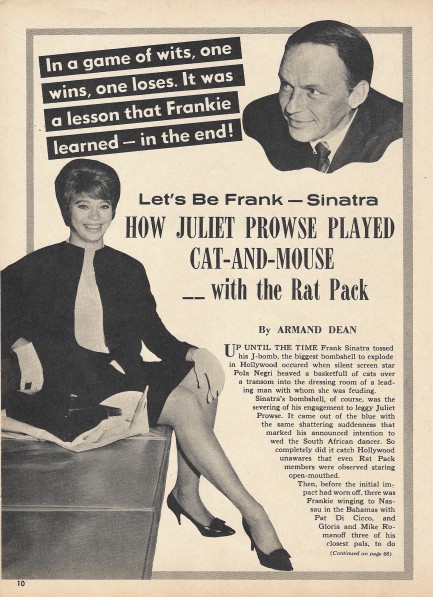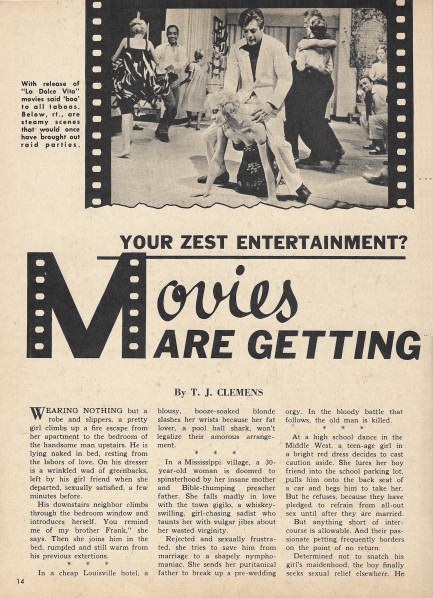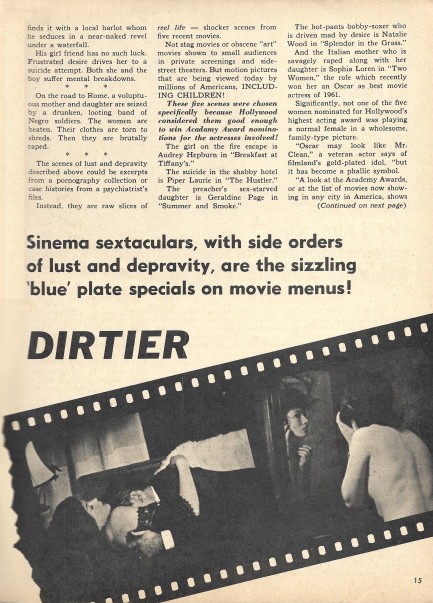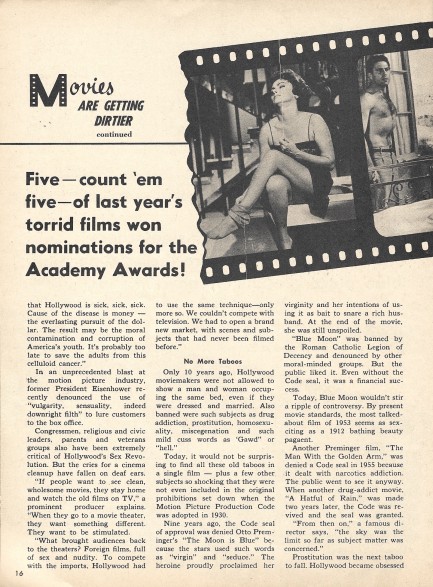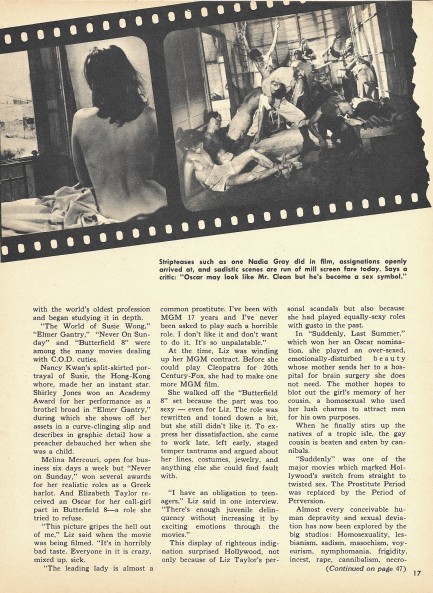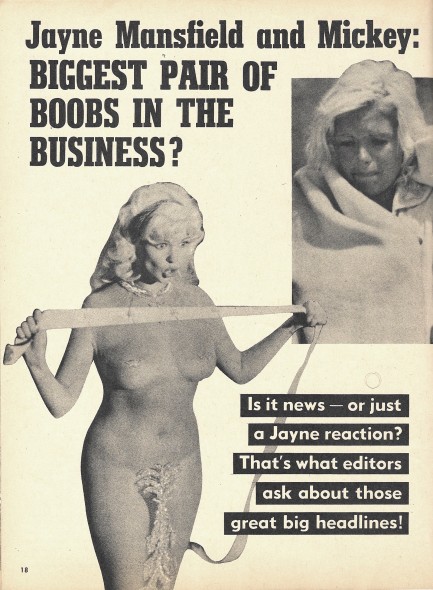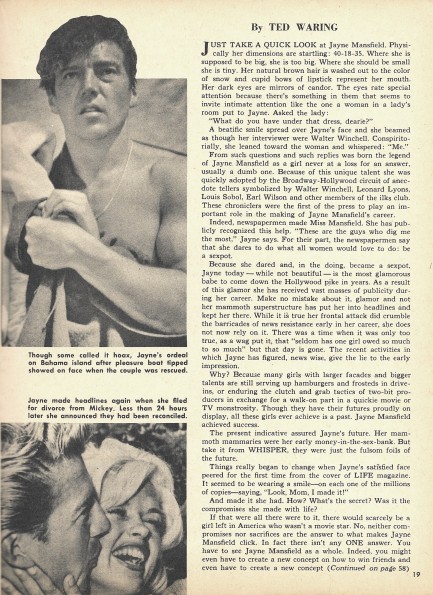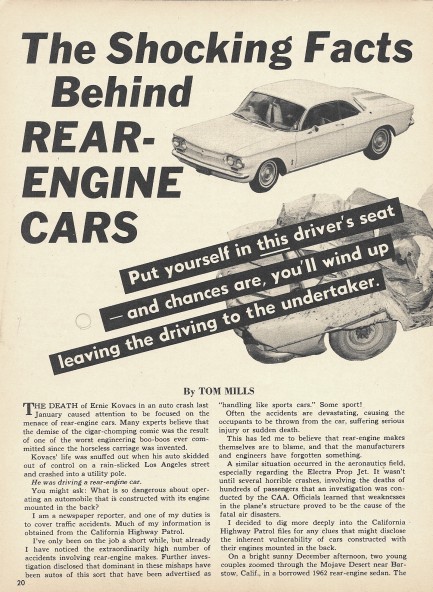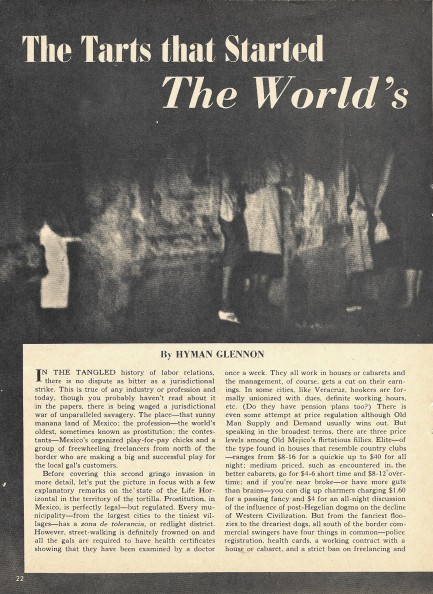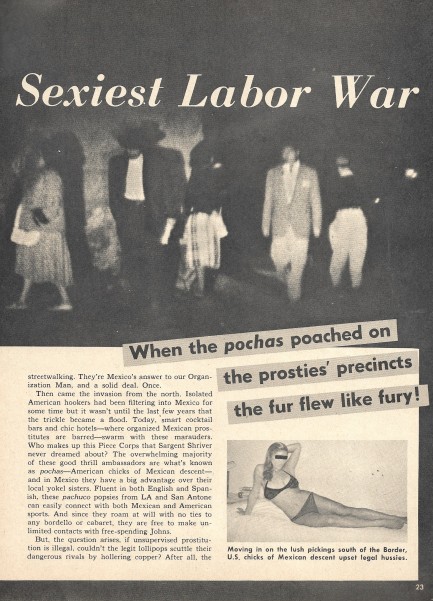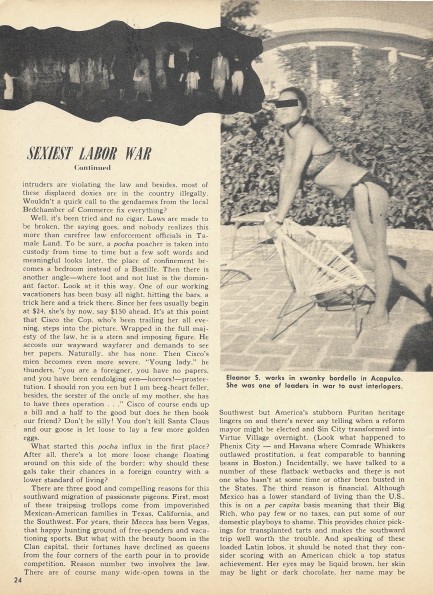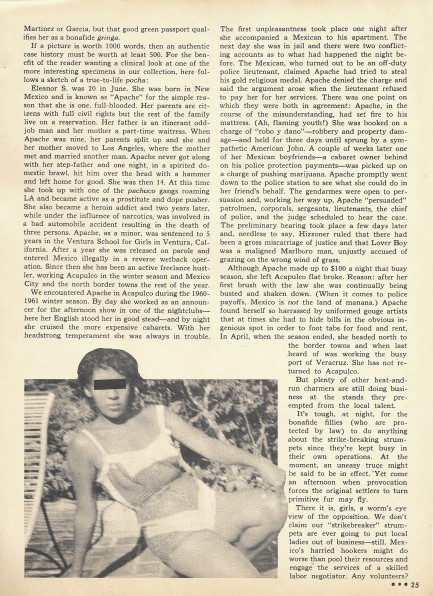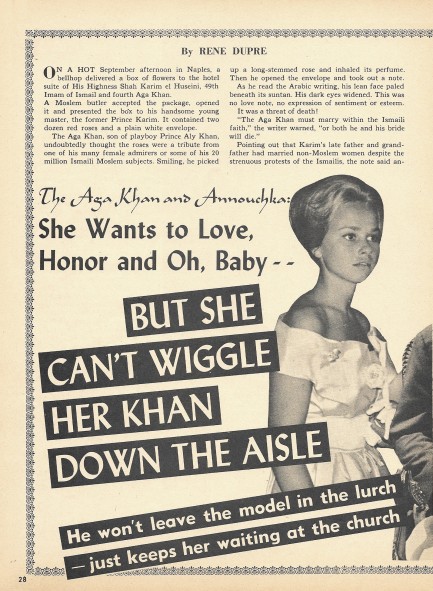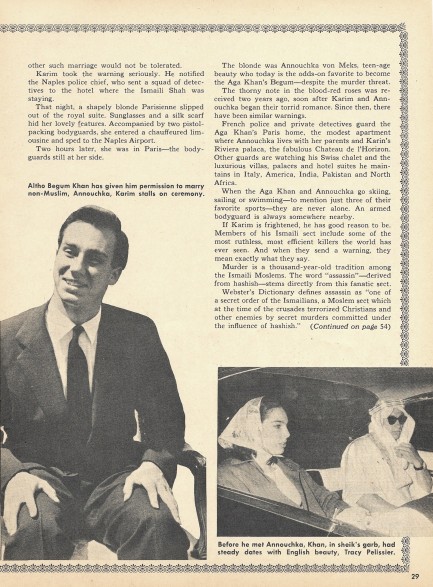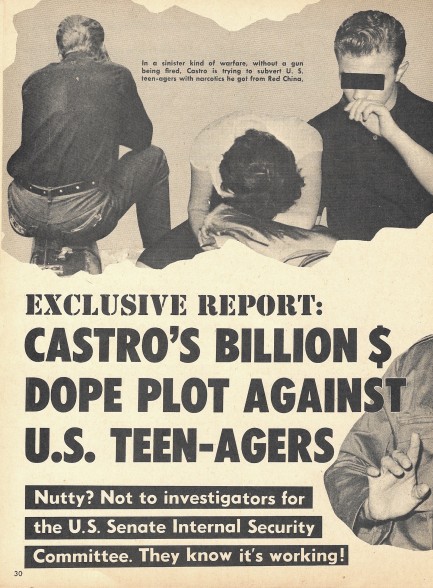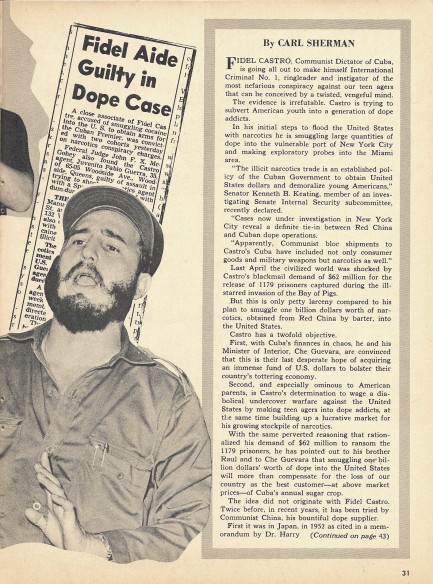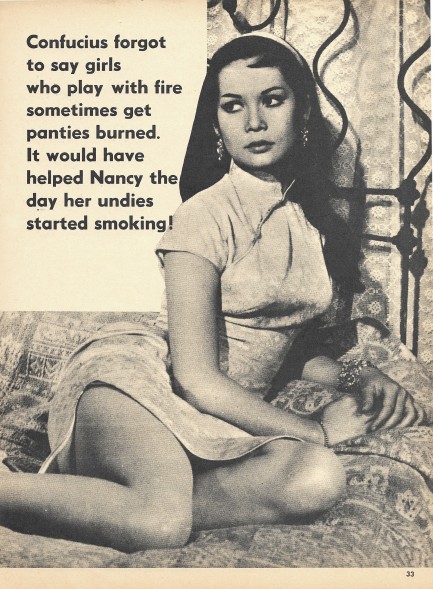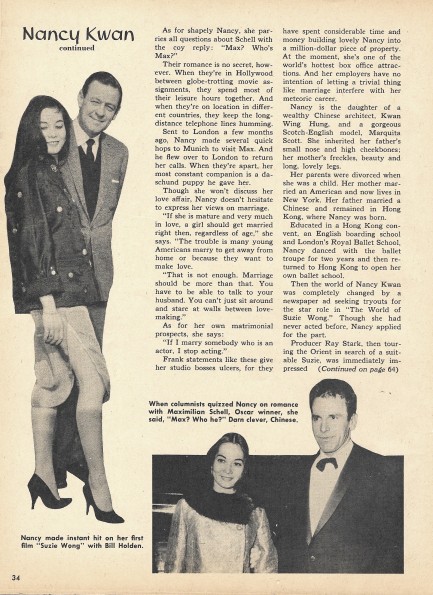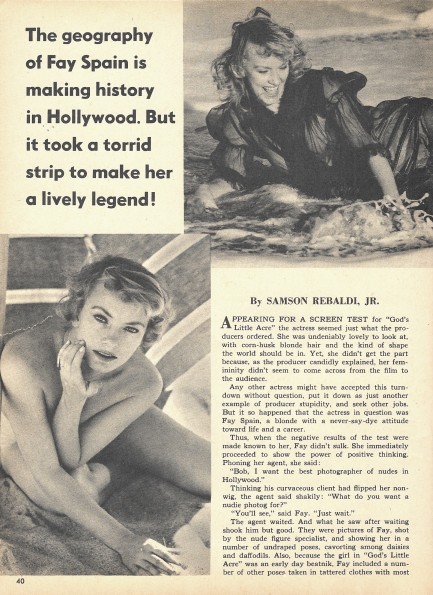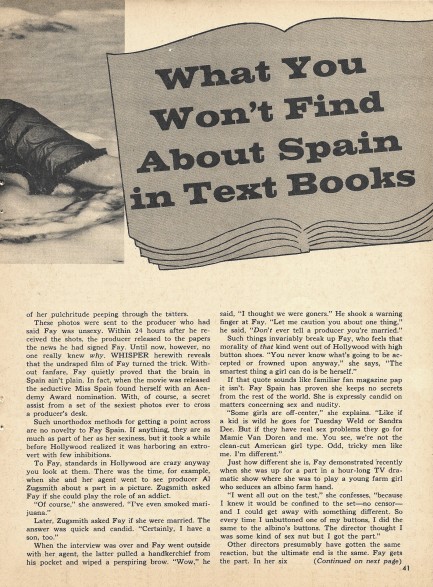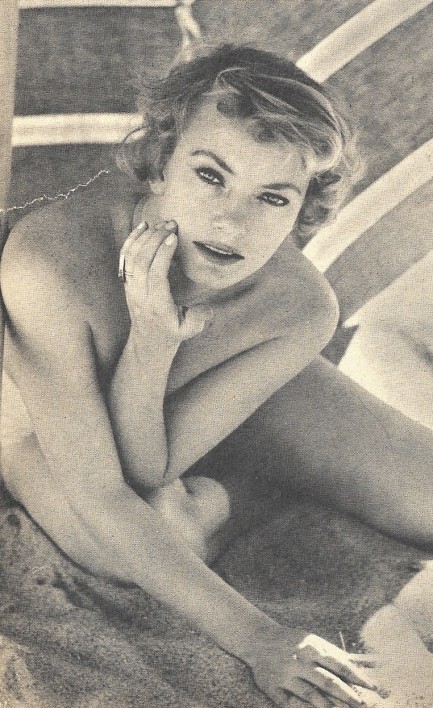 A heady new brew of tabloid gossip gets served up in Hollywood. 
We have a brand new tabloid to our website today—the colorful Off the Record Secrets, of which you see its June 1963 cover above. This was published by an outfit calling itself Magazette, Inc., which aimed for the high end of the tabloid market with bright fronts along the same lines as the big boys Confidential, Whisper, Hush Hush, et al. Like those, Off the Record Secrets covers miles of ground between its pages, spilling on everyone from Hugh Hefner and his Bunnies, to Frank Sinatra and his Pack, to Elsa Martinelli and her hubby Franco Mancinelli Scotti, to Kirk Douglas and his bad behavior.
Of the items on offer, we were struck by the photo of Annette Stroyberg stuffing her face. We always thought trying to catch celebrities eating in embarrassing fashion started with the internet gossip sites, but apparently we were wrong. In any case you can see why the best restaurants have private dining rooms. Stroyberg must have been furious. Also of note, you Cary Grant fans get see him in a towel at age sixty-one. He's holding together nicely, though there seems to be some stomach sucking going on. Still, nothing to be ashamed of. He's got ninety-five percent of men his age beat.
The earliest issue we've seen of Off the Record Secrets is from January 1962. By the early 1960s the tabloid market was crowded, therefore owing at least partly to a logjam on newsstands, this magazine lasted only into 1964 before folding its tent. Because of its scarcity issues sometimes go for hefty prices. We got ours for $19.00. But we've seen them auctioning for $75.00. The high pricing means we may not buy another example for a while, but we'll get it done. In the meantime, get acquainted with Off the Record Secrets. We have multiple rare images for you below.
       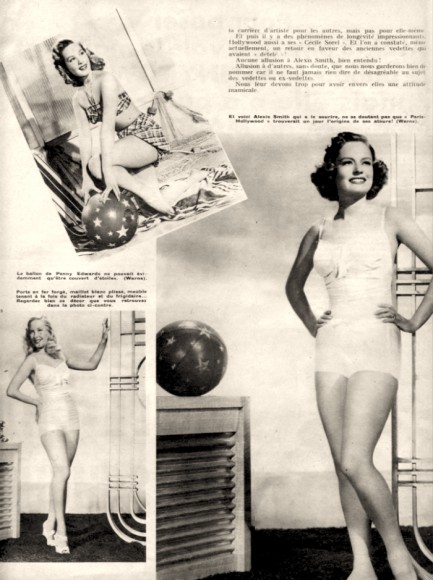                     
 Movie stars were always willing to give each other a hand. 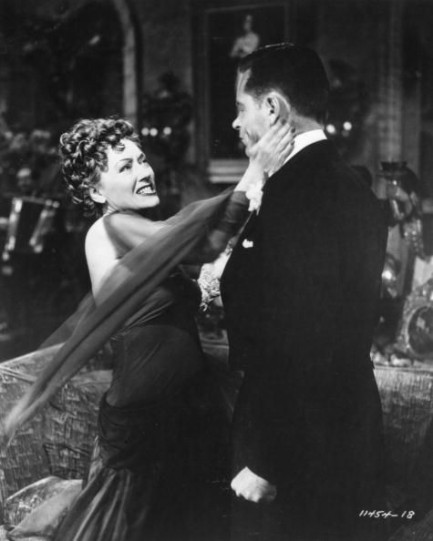
Once again we've been struck, so to speak, by the sheer number of cinema promo images featuring actors and actresses pretending to slap each other. They just keep turning up. The above shot is more about the neck than the face, but it still counts, as Gloria Swanson slaps William Holden in 1950's Sunset Boulevard. Below we have a bunch more, and you can see our previous collection at this link. Since we already discussed this phenomenon we won't get into it again, except briefly as follows: pretend slaps, film is not reality, and everyone should try to remember the difference. Many slaps below for your interest and wonder. 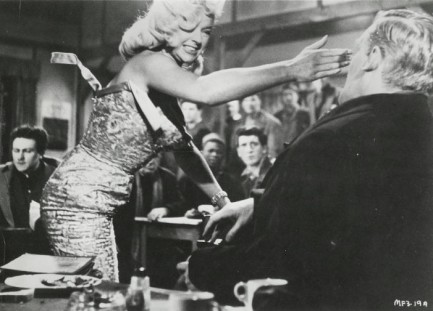 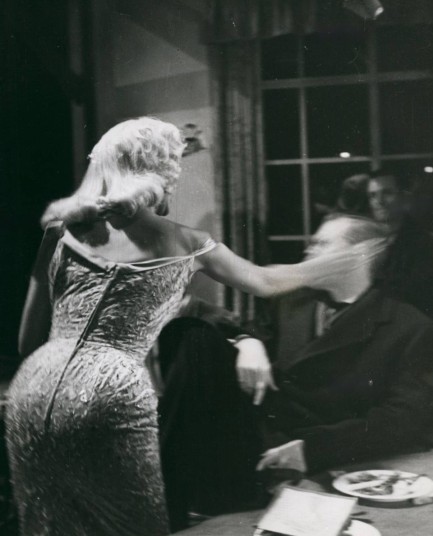 Diana Dors smacks Patrick Allen blurry in 1957's The Long Haul. Diana Dors smacks Patrick Allen blurry in 1957's The Long Haul.
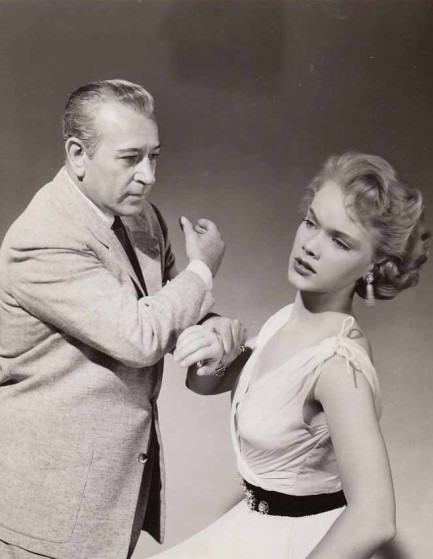 Mob boss George Raft menaces Anne Francis in a promo image made for 1954's Rogue Cop. Mob boss George Raft menaces Anne Francis in a promo image made for 1954's Rogue Cop.
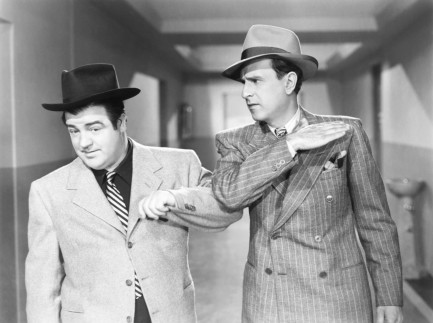 Bud Abbott gets aggressive with Lou Costello in 1945's Here Come the Co-Eds. Bud Abbott gets aggressive with Lou Costello in 1945's Here Come the Co-Eds.
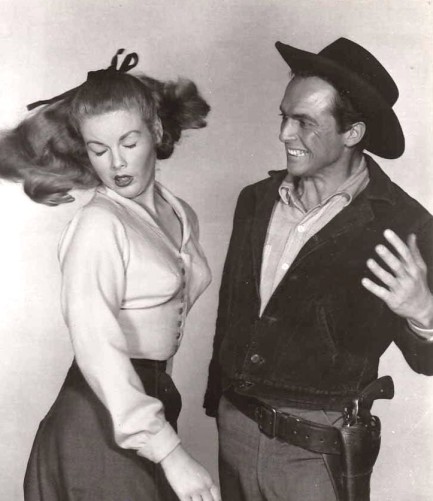 Jo Morrow takes one from black hat Jack Hogan in 1959's The Legend of Tom Dooley. Jo Morrow takes one from black hat Jack Hogan in 1959's The Legend of Tom Dooley.
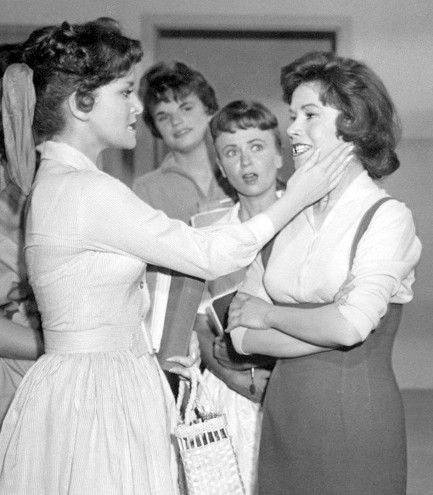 Chris Robinson and Anita Sands get a couple of things straight about who's on the yearbook committee in Diary of High School Bride. Chris Robinson and Anita Sands get a couple of things straight about who's on the yearbook committee in Diary of High School Bride.
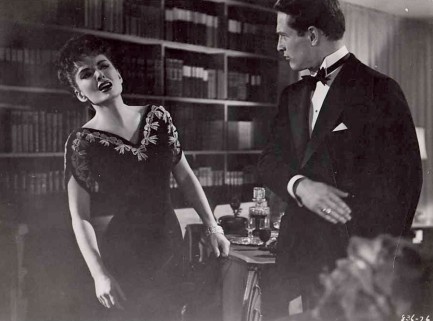 Paul Newman and Ann Blyth agree to disagree in 1957's The Helen Morgan Story. Paul Newman and Ann Blyth agree to disagree in 1957's The Helen Morgan Story.
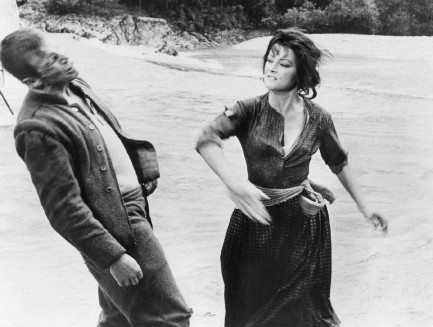 Verna Lisi shows Umberto Orsini who gives the orders in the 1967 film La ragazza e il generale, aka The Girl and the General. Verna Lisi shows Umberto Orsini who gives the orders in the 1967 film La ragazza e il generale, aka The Girl and the General.
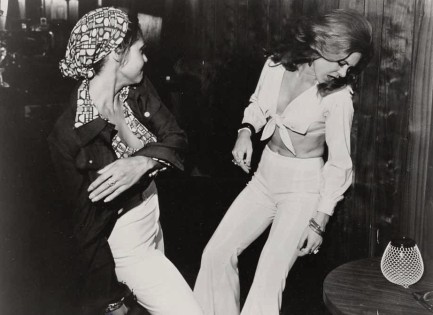 What the fuck did you just call me? Marki Bey slaps Betty Anne Rees loopy in the 1974 horror flick Sugar Hill. What the fuck did you just call me? Marki Bey slaps Betty Anne Rees loopy in the 1974 horror flick Sugar Hill.
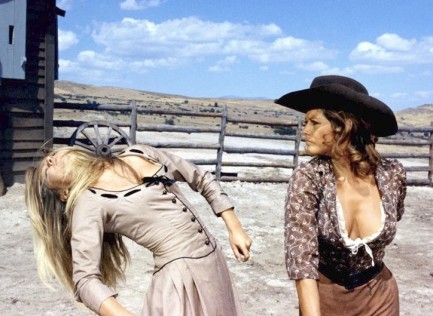 Claudia Cardinale slaps (or maybe punches—we can't remember) Brigitte Bardot in the 1971 western Les pétroleuses, known in English for some reason as The Legend of Frenchie King. Claudia Cardinale slaps (or maybe punches—we can't remember) Brigitte Bardot in the 1971 western Les pétroleuses, known in English for some reason as The Legend of Frenchie King.
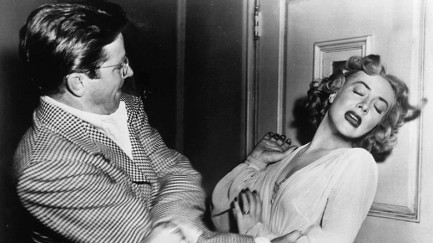 Audrey Totter reels under the attentions of Richard Basehart in 1949 Tension. We're thinking it was probably even more tense after this moment. Audrey Totter reels under the attentions of Richard Basehart in 1949 Tension. We're thinking it was probably even more tense after this moment.
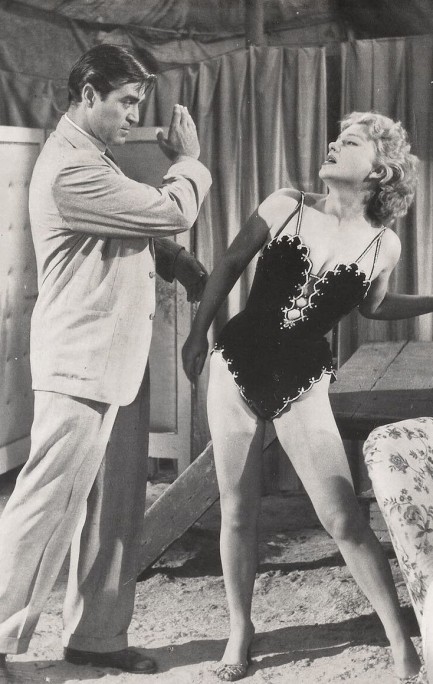 Anne Baxter tries to no avail to avoid a slap from heel Steve Cochran in 1954's Carnival Story. Anne Baxter tries to no avail to avoid a slap from heel Steve Cochran in 1954's Carnival Story.
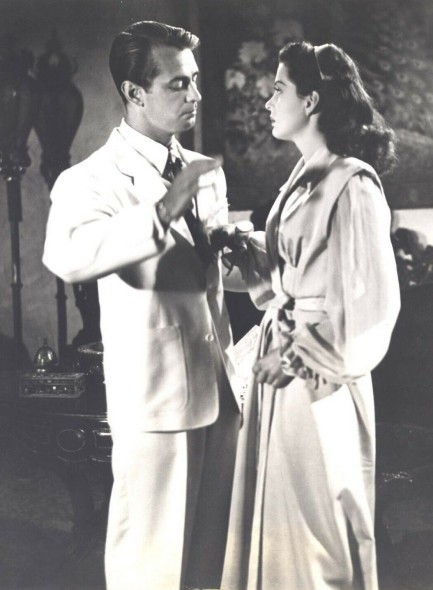 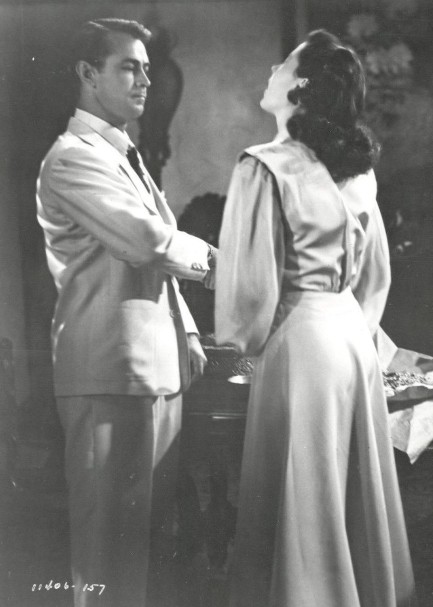 Though Alan Ladd was a little guy who Gail Russell probably could have roughed up if she wanted, the script called for him to slap her, and he obeyed in the 1946 adventure Calcutta. Though Alan Ladd was a little guy who Gail Russell probably could have roughed up if she wanted, the script called for him to slap her, and he obeyed in the 1946 adventure Calcutta.
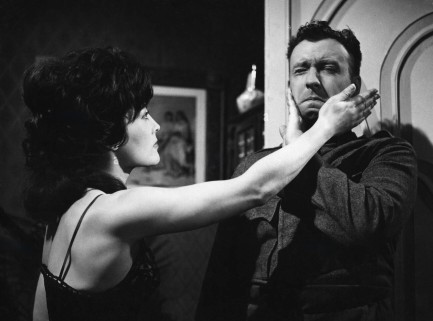 Peter Alexander guards his right cheek, therefore Hannelore Auer crosses him up and attacks his left in 1964's Schwejk's Flegeljahre, aka Schweik's Years of Indiscretion. Peter Alexander guards his right cheek, therefore Hannelore Auer crosses him up and attacks his left in 1964's Schwejk's Flegeljahre, aka Schweik's Years of Indiscretion.
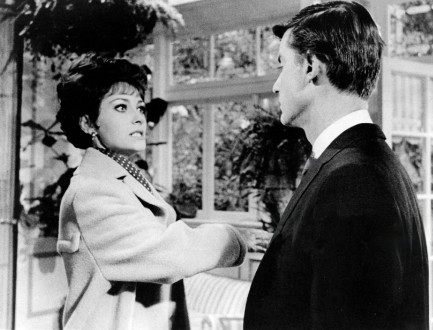 Elizabeth Ashley gives Roddy McDowall a facial in in 1965's The Third Day. Elizabeth Ashley gives Roddy McDowall a facial in in 1965's The Third Day.
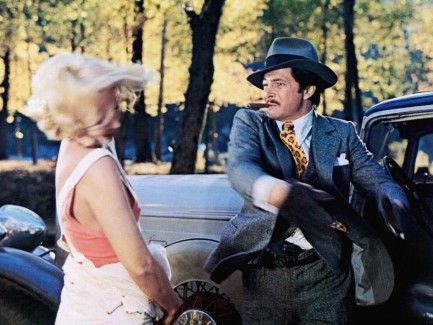 Tony Anthony slaps Lucretia Love in 1972's Piazza pulita, aka Pete, Pearl and the Pole. Tony Anthony slaps Lucretia Love in 1972's Piazza pulita, aka Pete, Pearl and the Pole. 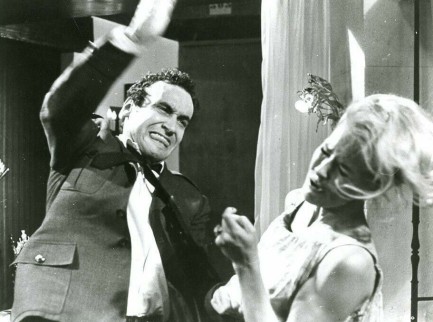 André Oumansky goes backhand on Lola Albright in 1964's Joy House. André Oumansky goes backhand on Lola Albright in 1964's Joy House.
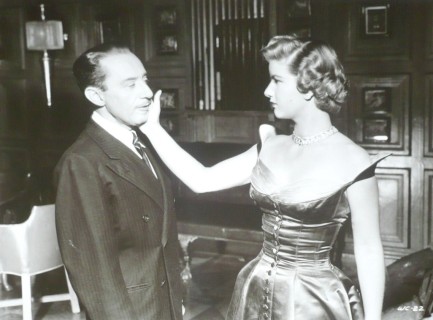 Frank Ferguson catches one from Barbara Bel Geddes in the 1949 drama Caught. Frank Ferguson catches one from Barbara Bel Geddes in the 1949 drama Caught.
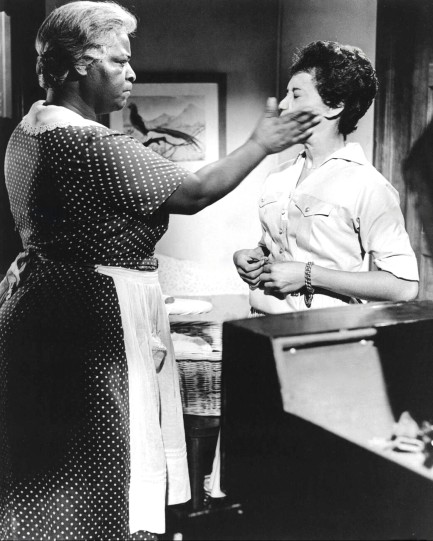 This looks like a real slap, so you have to credit the actresses for their commitment. It's from 1961's Raisin in the Sun and shows Claudia McNeil rearranging the face of Diana Sands. This looks like a real slap, so you have to credit the actresses for their commitment. It's from 1961's Raisin in the Sun and shows Claudia McNeil rearranging the face of Diana Sands.
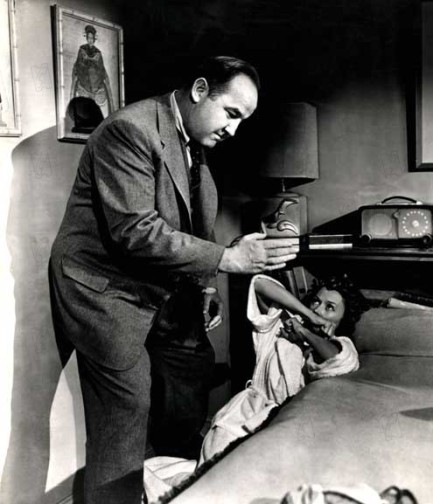 Gloria Grahame finds herself cornered by Broderick Crawford in 1954's Human Desire. Gloria Grahame finds herself cornered by Broderick Crawford in 1954's Human Desire.
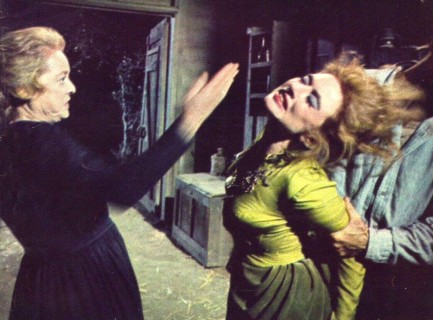 Bette Davis, an experienced slapper and slappee, gets a little assistance from an unidentified third party as she goes Old West on Amanda Blake in a 1966 episode of Gunsmoke called “The Jailer.” Bette Davis, an experienced slapper and slappee, gets a little assistance from an unidentified third party as she goes Old West on Amanda Blake in a 1966 episode of Gunsmoke called “The Jailer.”
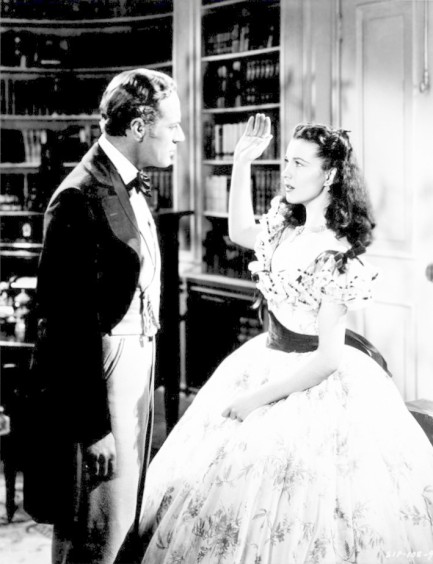 There are a few slaps in 1939's Gone with the Wind, so we had our pick. We went with Vivien Leigh and Leslie Howard. There are a few slaps in 1939's Gone with the Wind, so we had our pick. We went with Vivien Leigh and Leslie Howard.
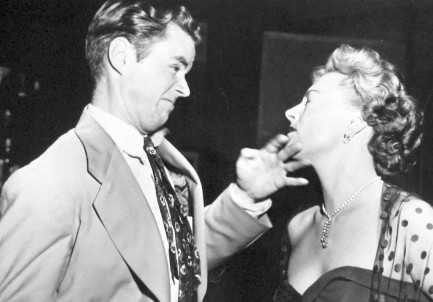 Virginia Field takes one on the chin from Marshall Thompson in Dial 1119. Virginia Field takes one on the chin from Marshall Thompson in Dial 1119.
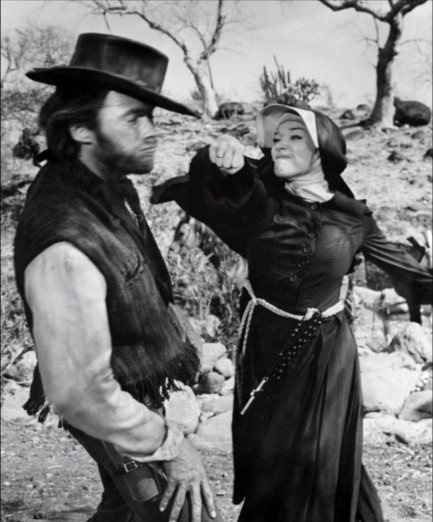 Clint Eastwood absorbs a right cross from nun Shirley MacLaine in 1970's Two Mules for Sister Sara. Clint Eastwood absorbs a right cross from nun Shirley MacLaine in 1970's Two Mules for Sister Sara.
 Shhh! Character assassination in progress. 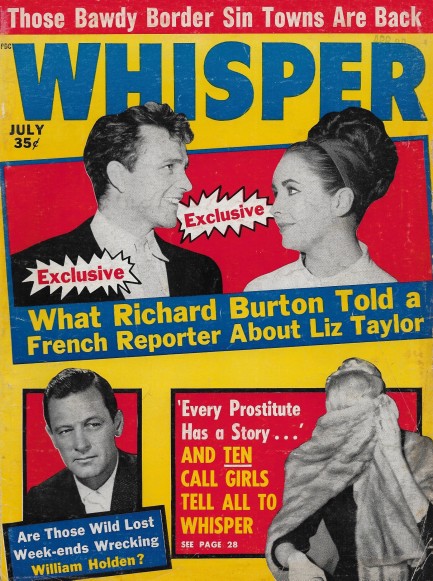 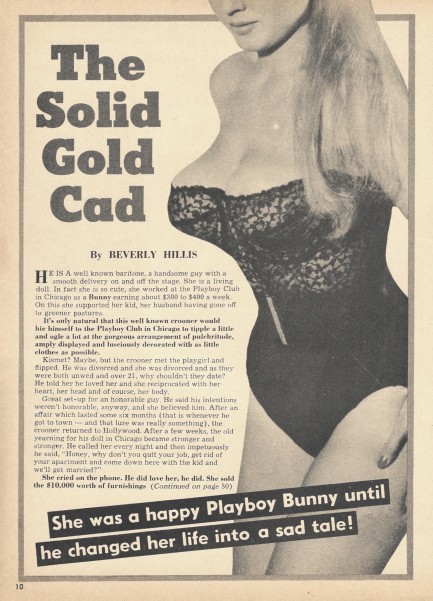 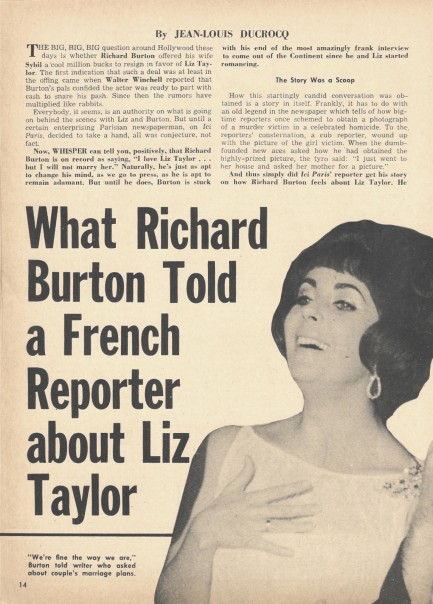 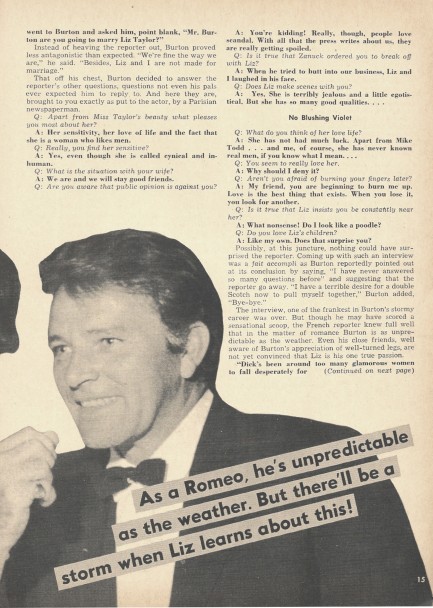 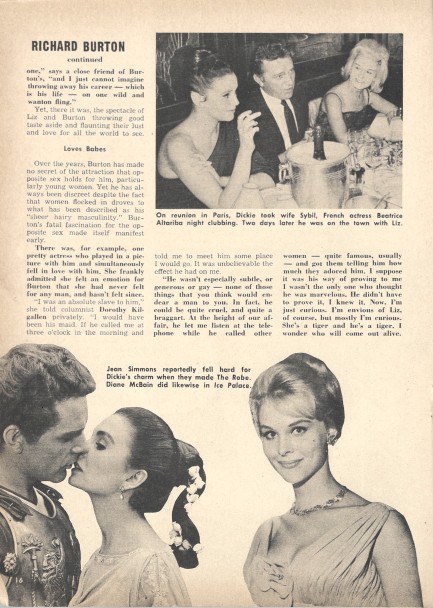 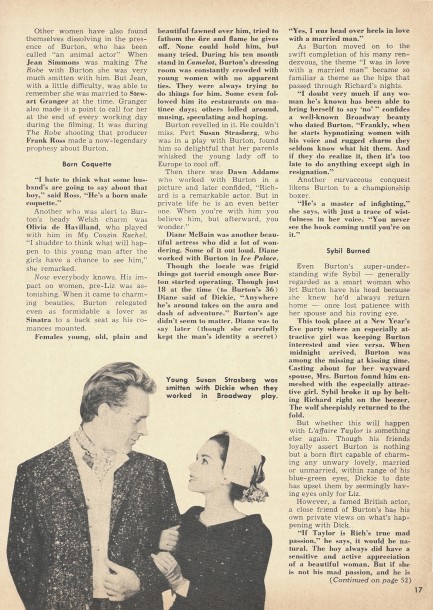 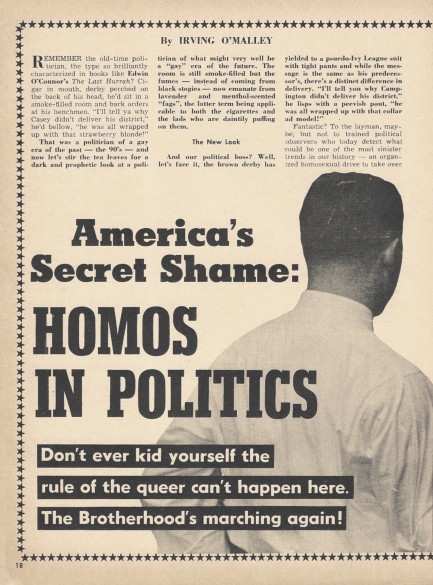 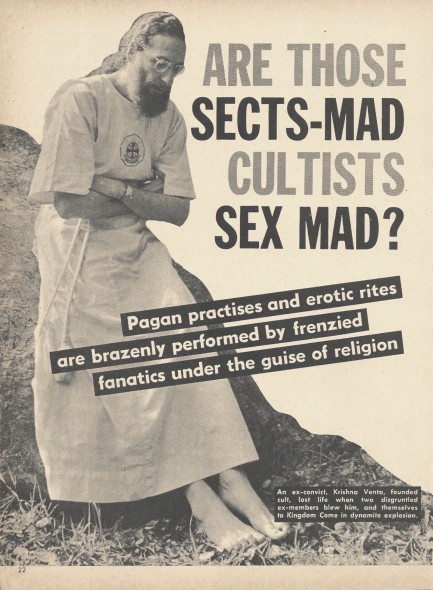 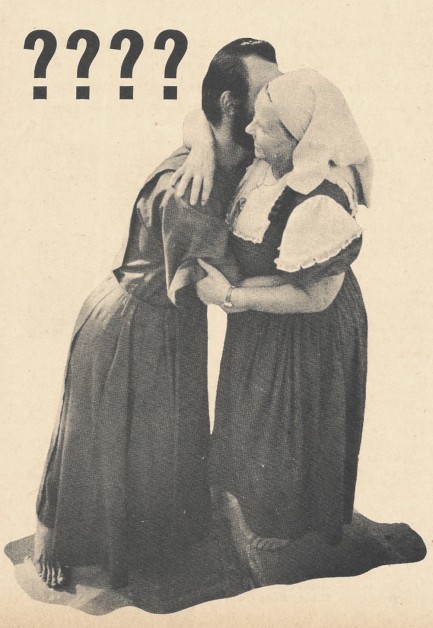  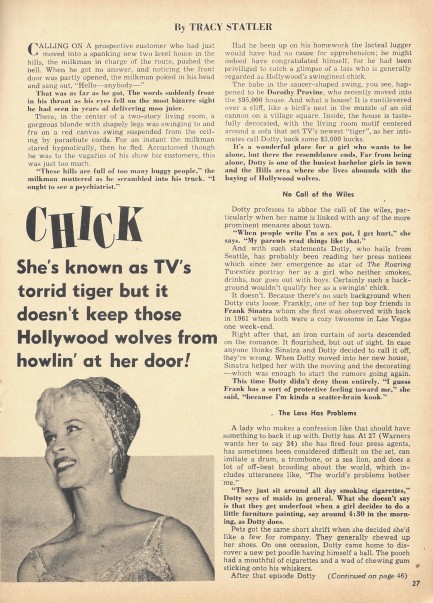 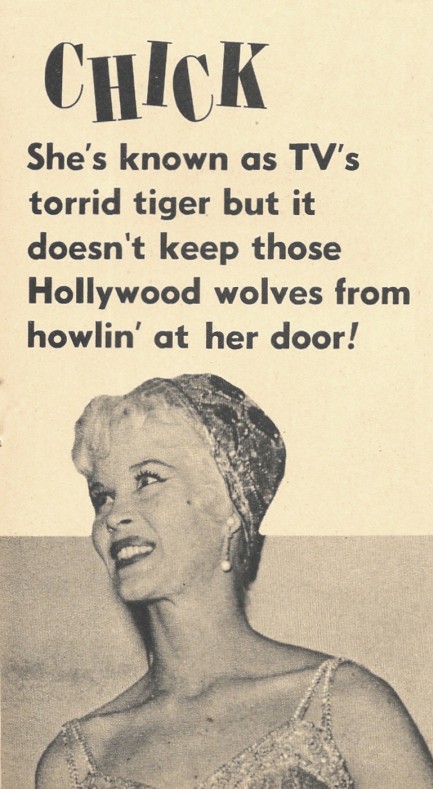 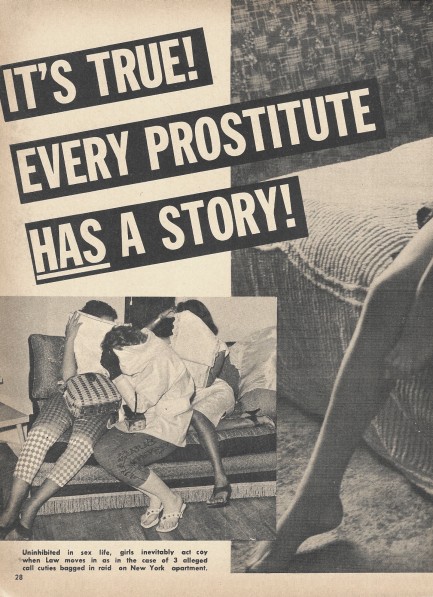 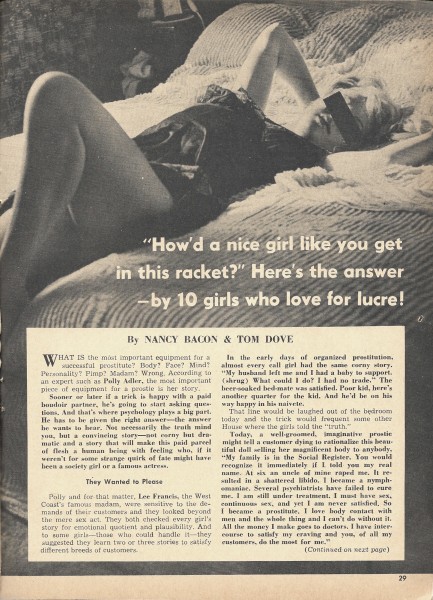 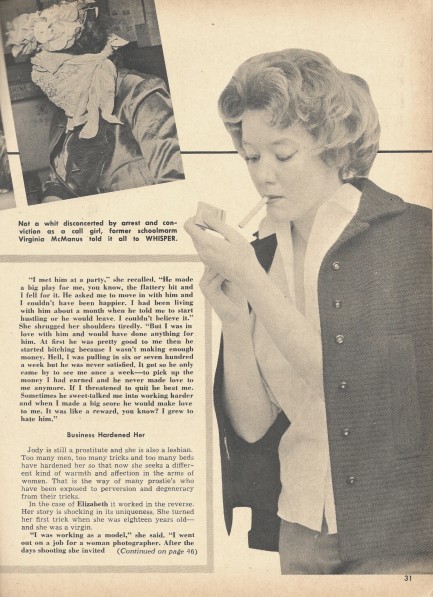 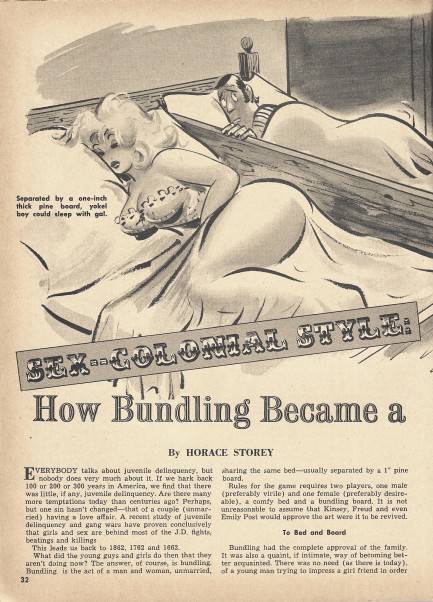 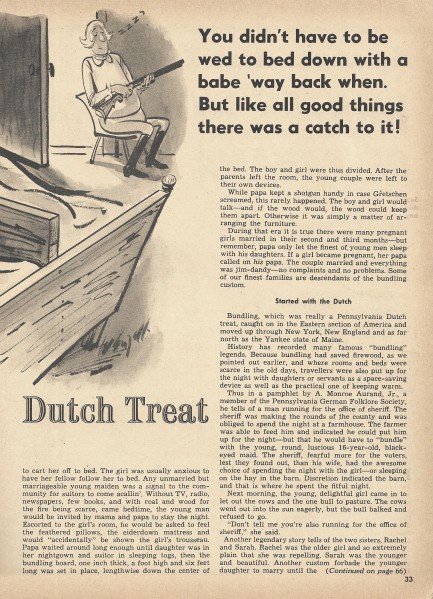 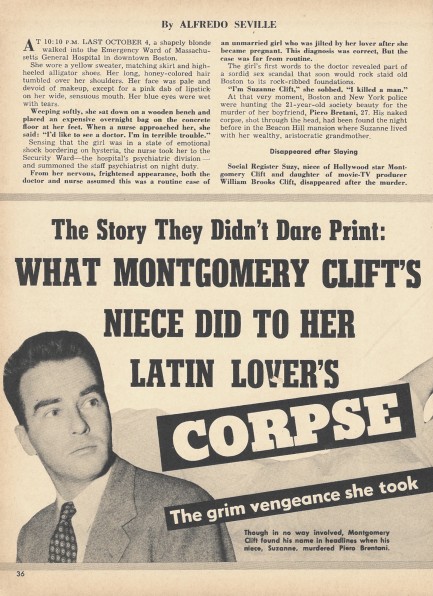 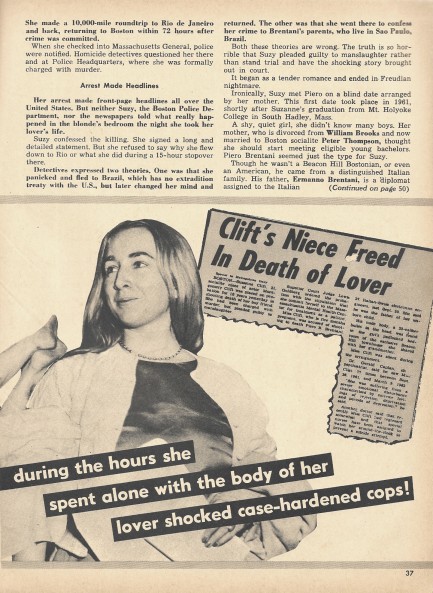 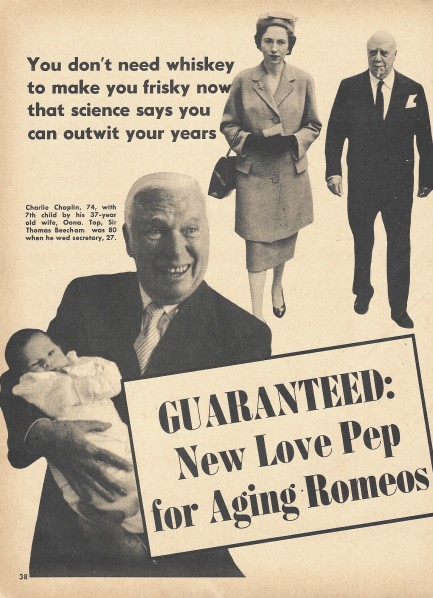 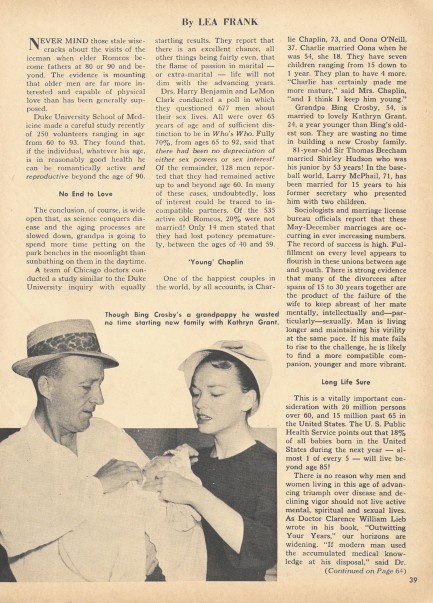 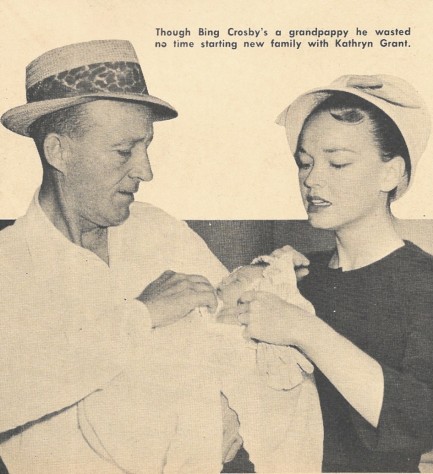 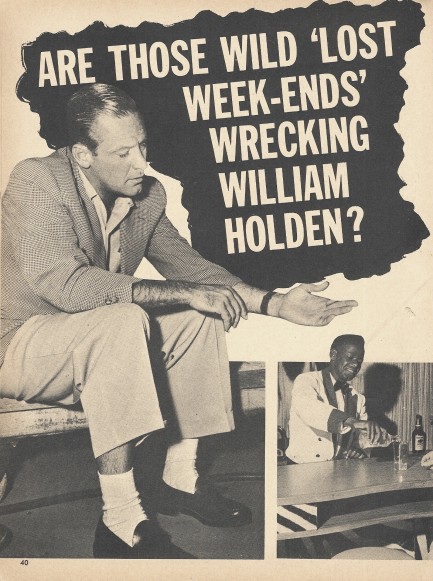 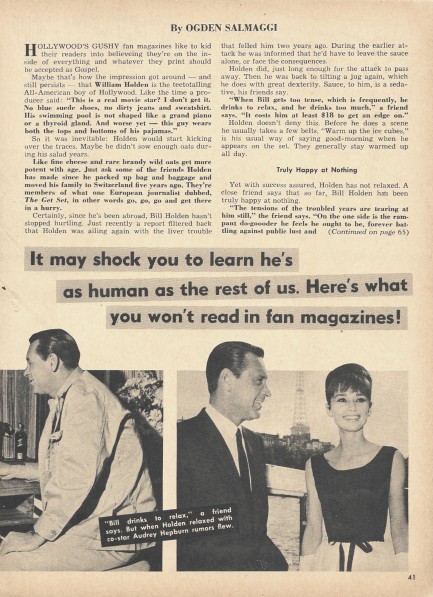  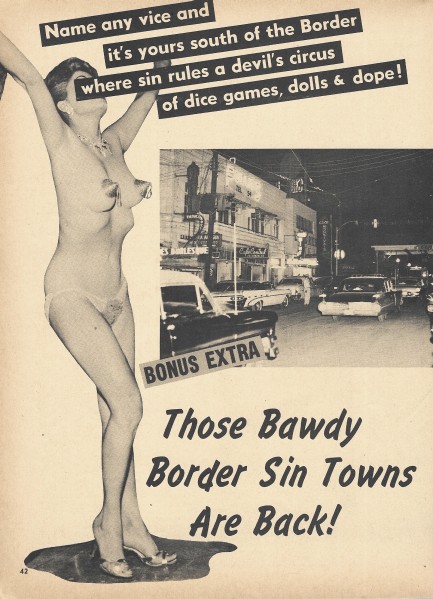 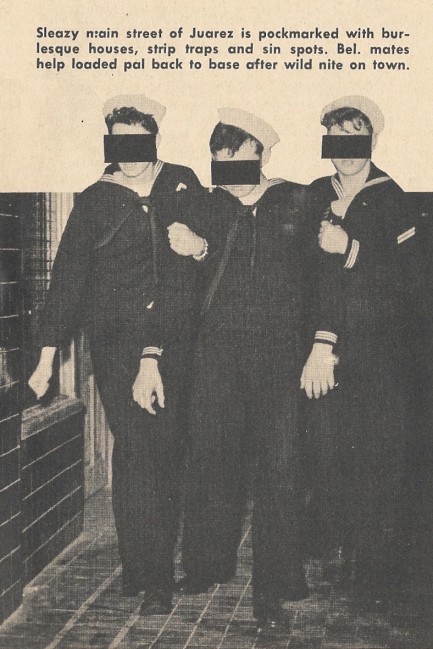
Above are some scans from an issue of the tabloid Whisper published this month in 1963. We've shared hundreds of tabloids over the years, and we always marvel at them. How would you describe the compulsive need to know what's going on in other people's lives? Is it a from of comparison? Is it schadenfreude? Is it envy? The American Psychological Association calls it natural behavior stemming from the fact that humans are social animals curious about what's going on around them. It's why, according to the APA, we gossip about friends and neighbors. Your first thought, in terms of tabloids, might be that celebrities are neither friends nor neighbors. However, the headshrinkers tell us they are. People create parasocial relationships with celebrities, and thus the same dynamic exists. And nobody is immune. Condescending remarks about celebrity gossip are liable to come from people inordinately involved with their favorite baseball player, acclaimed author, or television talking head. Some people let celebrity fashionistas suggest what they should wear, while others who consider themselves above such silliness let television pundits tell them who to hate.
We find mid-century tabloids incredibly interesting, even if everybody being gossiped about is long departed. The robust sales of tabloids on auction sites seems to confirm that we aren't alone. In this issue Whisper digs dirt on numerous titans of celebritydom—Elizabeth Taylor, Richard Burton, Audrey Hepburn, Bing Crosby, Charlie Chaplin, and others. Editors also let their bigot flags fly by predicting “one of the most sinister trends in history—an organized homosexual drive” to take over the U.S. That one still sells in some quarters. We'll have more from Whisper soon.
 Happiness, anger, and ballistics.  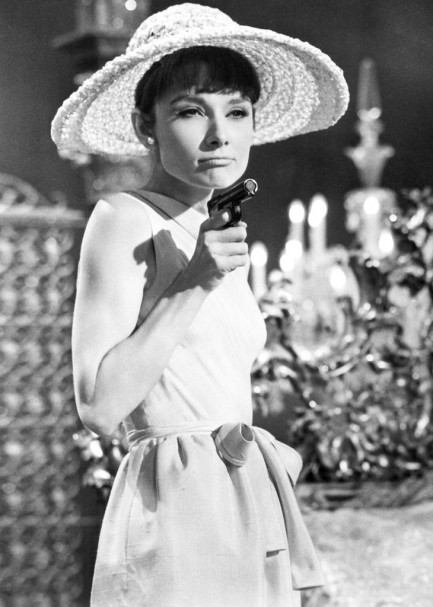
These two promo images of famously thin actress Audrey Hepburn were made for her 1964 film Paris When It Sizzles. It's another movie in her romance/adventure mold, along with Charade, How To Steal a Million, and others. There's a Hollywood commandment: Thou shalt not mess with success. For a while, following that rule made Hepburn one of the biggest stars of all.
 It was the Whisper heard from coast to coast. 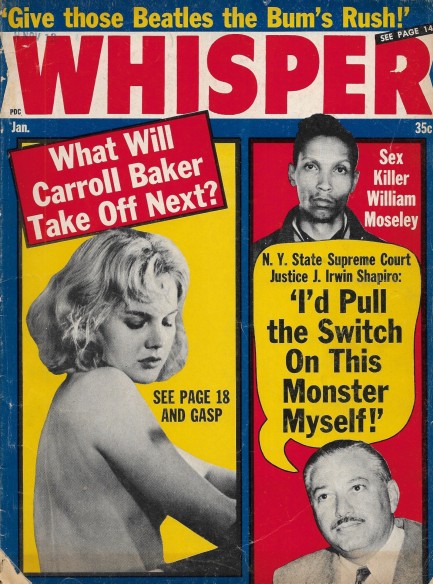
Above is a cover of the tabloid Whisper from January 1965, with actress Carroll Baker, convicted murderer Winston Moseley, and New York judge J. Irwin Shapiro starring on the front. But before we get into the magazine, we want to share the good news that our longtime scanning problems are fixed. We didn't get a new scanner, though. We got a new computer—a Mac Studio with plenty under the hood. It's quicker than the old Mac, but it also changed the functionality of the scanning interface. The whole process runs differently, and is about three times faster now. So you'll be seeing more magazines in the future. Turning back to Whisper, Winston Moseley—who editors call William for some reason—was America's villain of the moment for the murder of Catherine Genovese, who he stalked, stabbed with a hunting knife, then found again where she had taken refuge in a building, and finished her off. Additionally, Moseley was a necrophiliac. He raped his victims—of which there were three total—post-mortem. Of the trio of victims Genovese is the one that's remembered today because her murder sparked a national reckoning about the relationship between citizens and the police, as well as life in big cities, because the press reported that thirty-eight people had seen the crime happening but had done nothing. As it turned out, that number was wildly inaccurate, but never let the truth get in the way of perfectly cooked, juicy tabloid outrage. A quote appeared in nearly every story about the murder: “I didn't want to get involved.” New York City—where the crime occurred—and other metropolitan centers were criticized as uncaring places. Author Harlan Ellison, who at that time was writing urban crime fiction, weighed in, saying, “not one of [the witnesses] made the slightest effort to save her, to scream at the killer, or even to call the police.” Peak outrage was achieved by New York State Supreme Court Justice J. Irwin Shapiro when he expressed a desire to execute Moseley himself. In the end, Moseley wasn't executed at all. He died in prison in 2016 at age eighty-one.
Elsewhere in Whisper, you'll notice that the magazine is—unsurprisingly, given the time period and nature of the publication—antagonistic toward gay men, as demonstrated by the panel with the blaring text: “Who's Queer Asked the Peer?” But what is a surprise is that later in the issue the editors run a detailed piece on transvestites and transsexuals, and the approach is very different than the contempt shown toward homosexuality. As we've pointed out many times before, mid-century tabloids had a deep interest in trans issues. The story is titled, “A Doctor Answers What Everyone Wants To Know About Sex Change Operations.” The tone is as follows:
The condition he referred to was the common plight of all male transsexuals. Physically he was a man, but emotionally and personality-wise he was a woman, a condition that made it difficult to find successful employment, and to live at all happily. Fortunately, in his case, he had a lawyer and a wise judge who were able to help him in his wish to go to Europe for a sex change operation so that his body could be brought into greater harmony with his mind, and enable him to work and live with a degree of happiness he had never known before.
That's respectful—if not even compassionate—for a 1965 publication considered lowbrow by sophisticated readers. Is it a paradox that the magazine could be so evil toward gay men, yet so civil toward transsexuals? We think so, and we'd love to know the thought process behind it. While we're puzzling that out, you may want to move on to Whisper's slate of celebrity news. Everyone from Romy Schneider to Ernest Borgnine get their due exposure. We've uploaded the magazine's “Behind the Whispers” feature, so you can get the dish on a few Hollywood stars. Please enjoy.
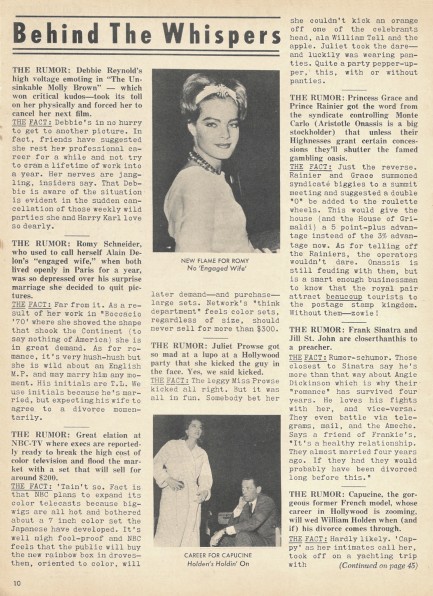  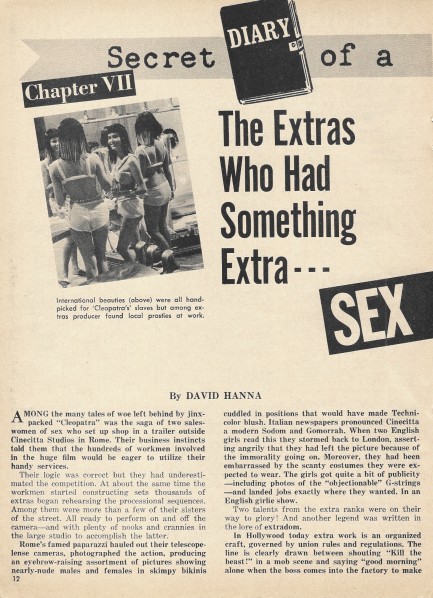 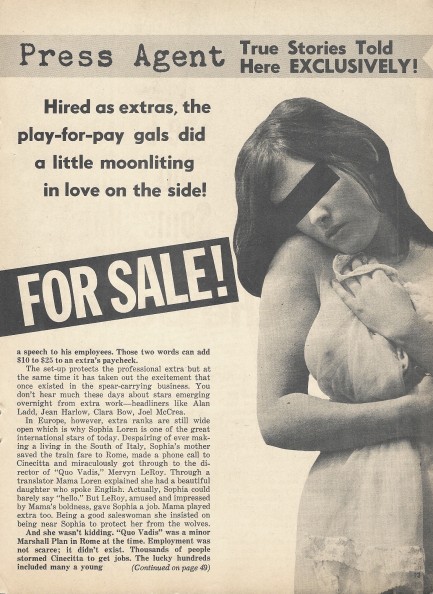 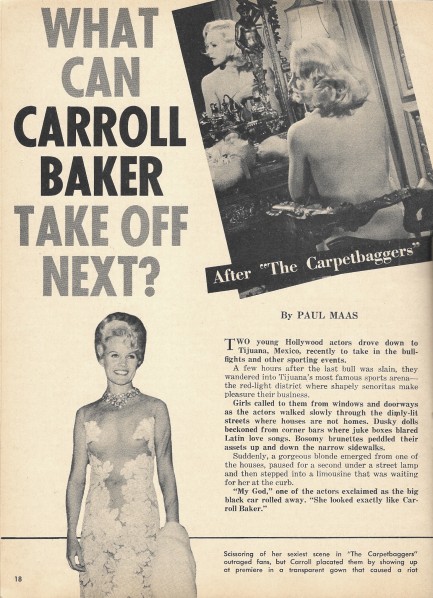 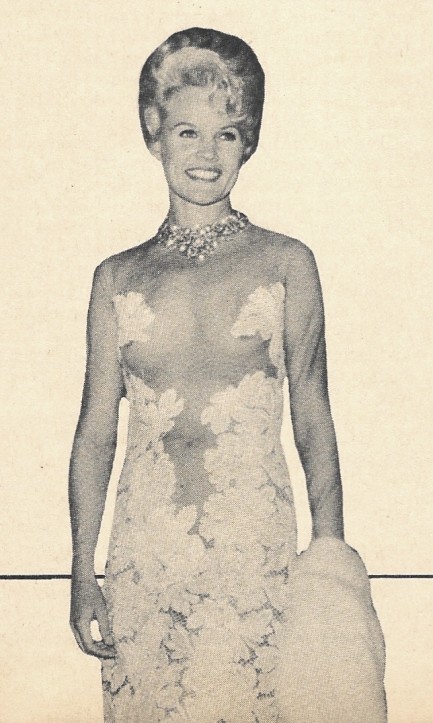 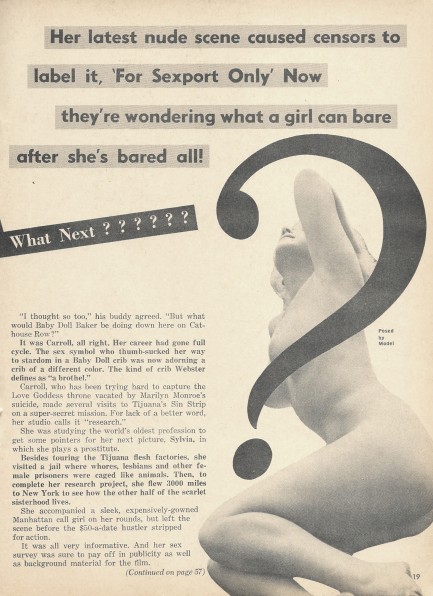 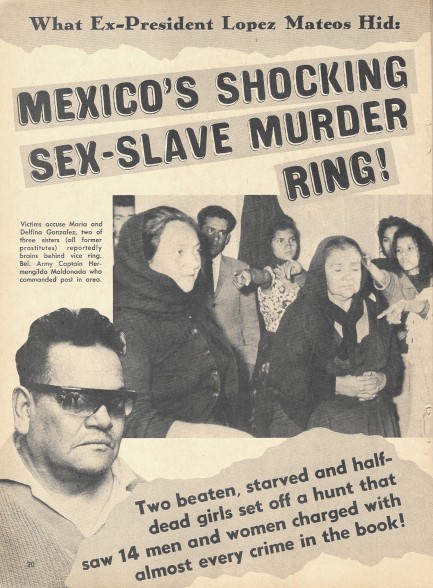 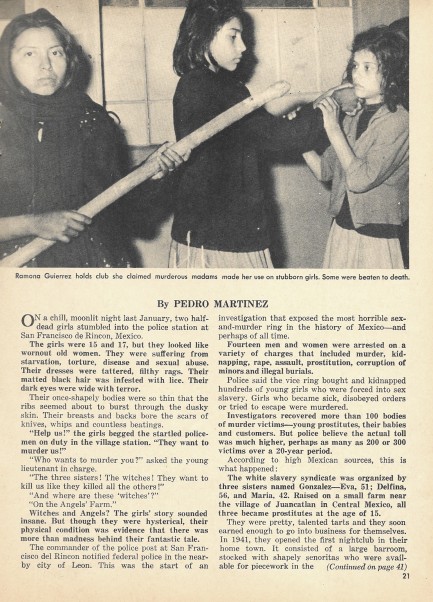 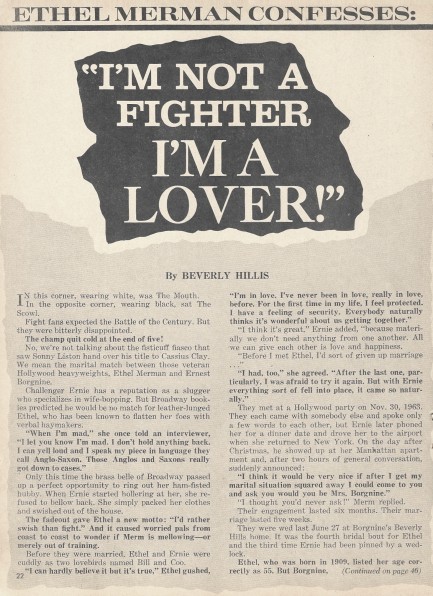  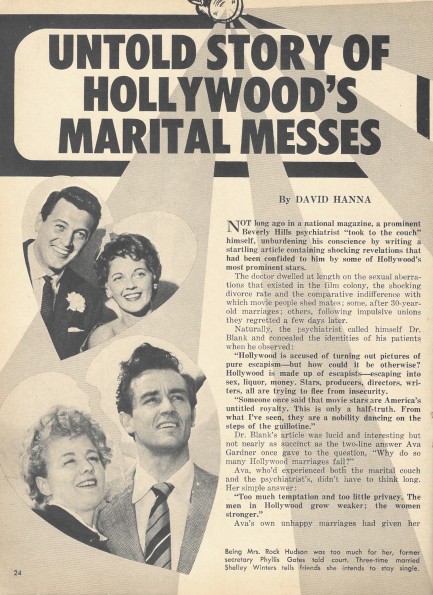 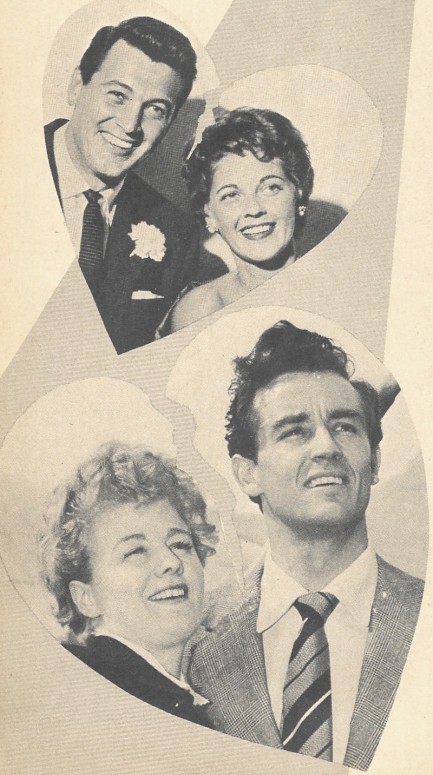 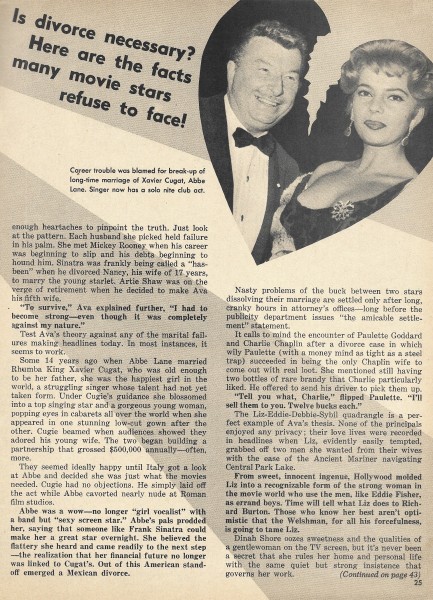 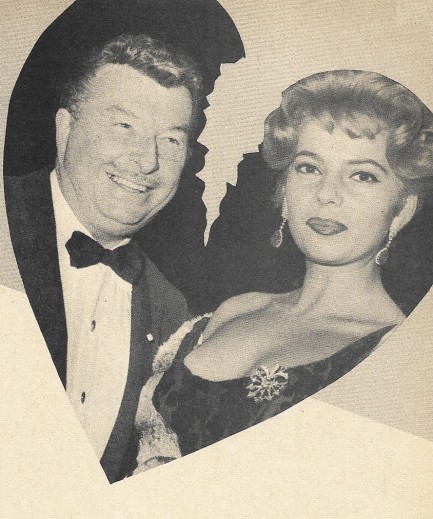 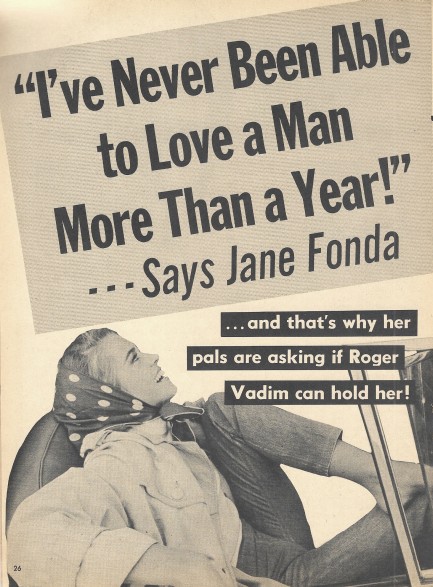 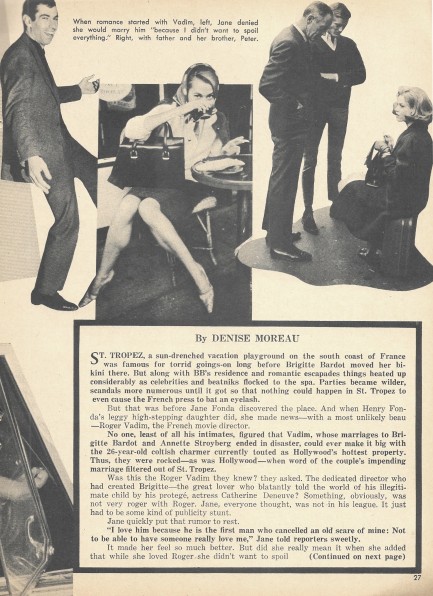 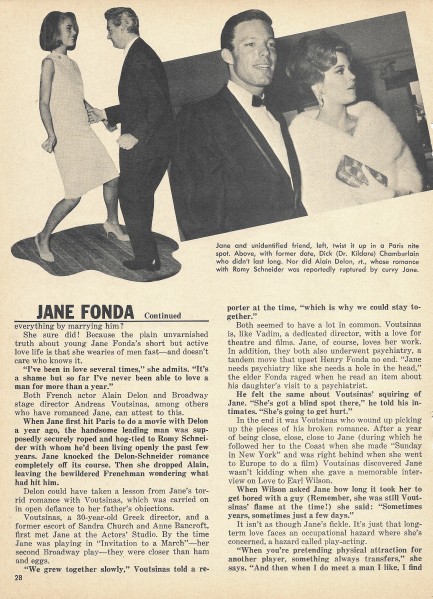 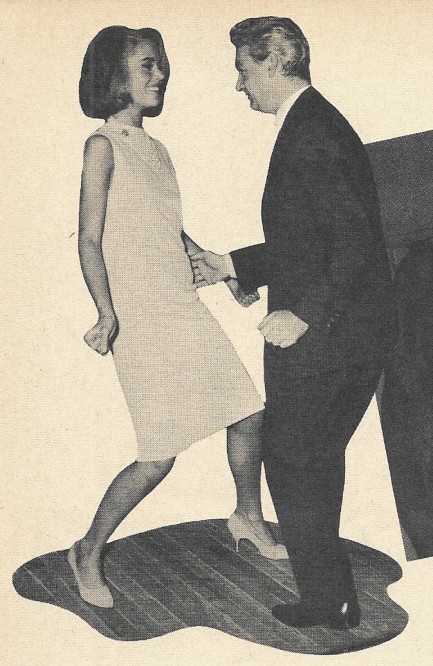 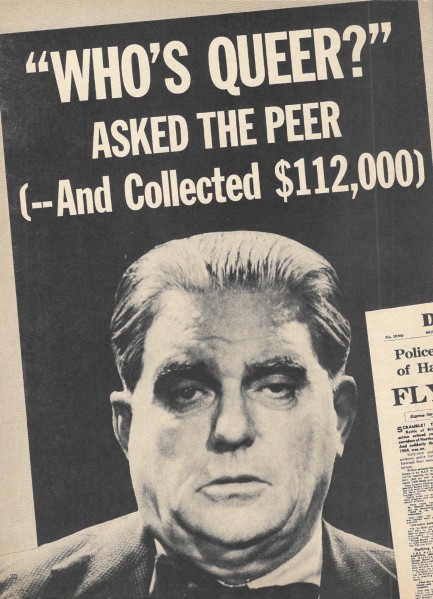 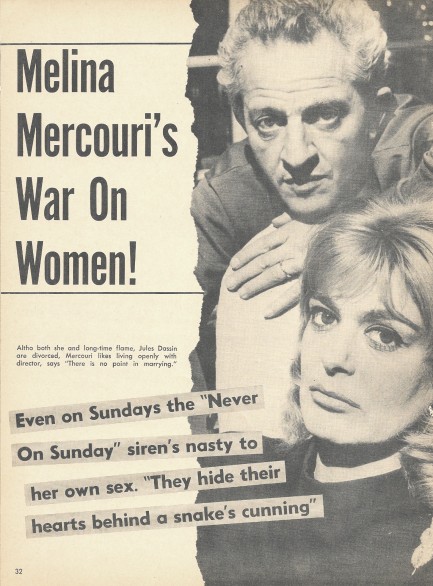 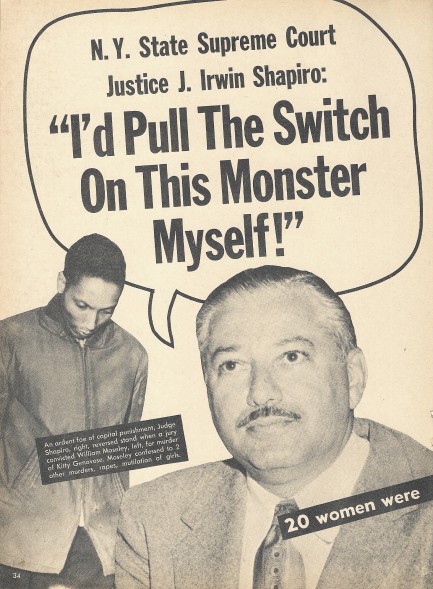 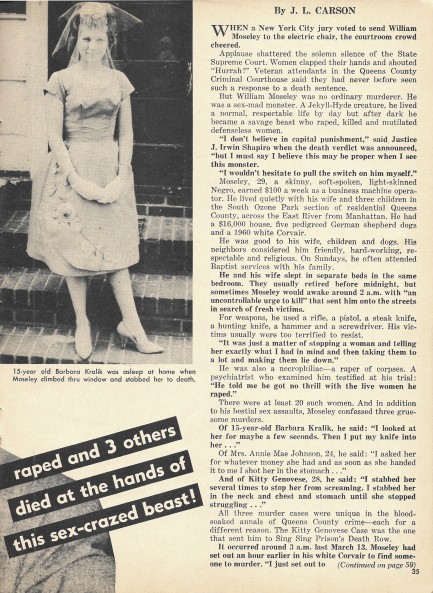 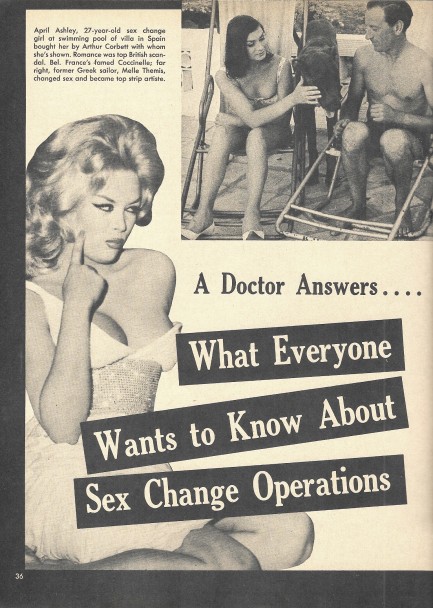 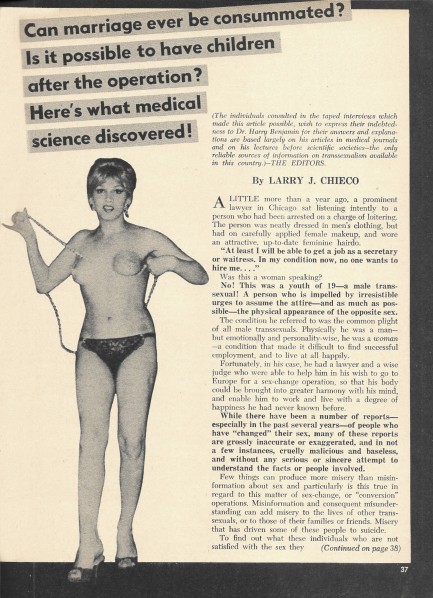 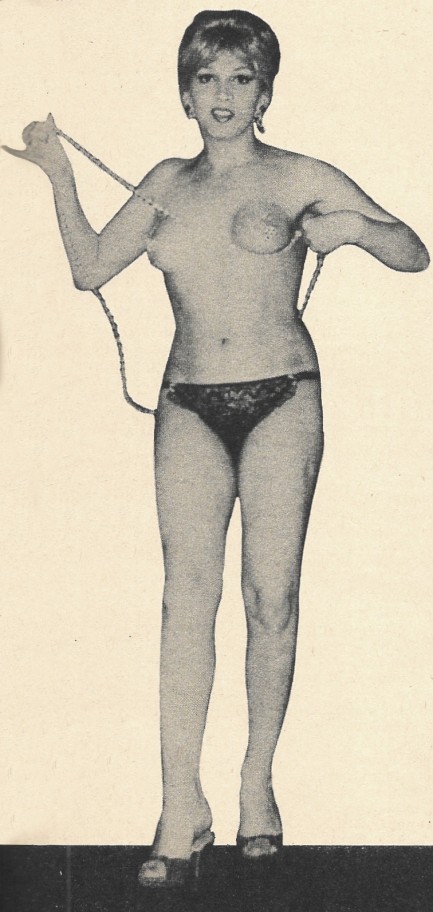 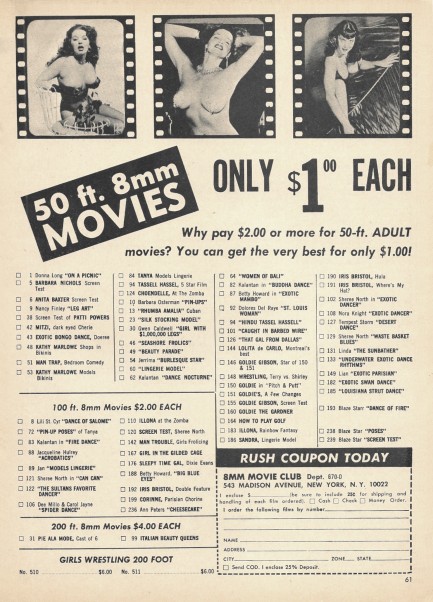
 The king of tabloids sets its sights on the Queen of Greece. 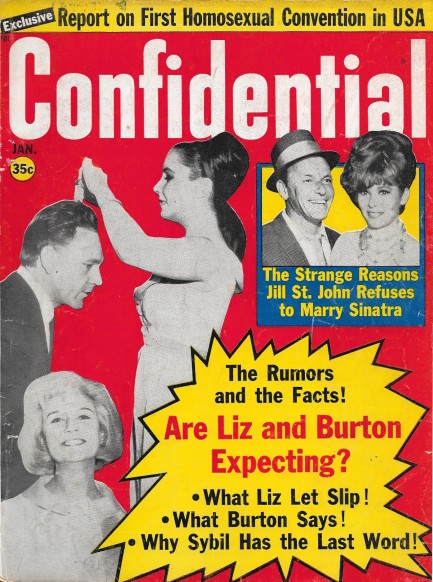
Every month when Confidential magazine hit newsstands, we imagine Hollywood celebrities receiving the bad news that they'd made the cover, and going, “Shit.” This issue published in January 1964 features Elizabeth Taylor, Richard Burton, Frank Sinatra, and Jill St. John. The first three members of that group probably took the news in stride, since they were all tabloid staples by then. St. John wasn't quite at their level, but her links with Sinatra kept her in the scandal sheets for a while too.
A person who wasn't used to Confidential's attentions was Frederica of Hanover, who at the time was Queen Consort of Greece—which is just a fancy way of saying she was married to the King of Greece. Confidential says she was a Nazi, a pretty serious charge, needless to say. Was she? Well, her grandfather was Kaiser Wilhelm II, as a girl she was a member of Bund Deutscher Mädel, which was a branch of the Hitler Youth, and she had brothers in the SS. Also, back in 1934 Adolf Hitler wanted to link the British and German royal houses, and tried to pressure Frederica's parents into arranging for the seventeen-year-old girl to marry the Prince of Wales, Edward VIII. And as Queen Consort she made a habit of meddling in Greek politics in ways that made clear she was not a fan of democracy. None of that is a particularly good look.
She had defenders, though, who believed that for a person in her position it would have been impossible not to have been a member of certain groups and to have socialized with Nazis. It's interesting, isn't it, how the rich and powerful always benefit from a special set of excuses? People can't really expect her to have made a stand, can they? But the excuse is hollow. As a high ranking royal she could have avoided anything she wished. Membership in organizations when she was a little girl is one thing, but as an adult she could have denounced Nazism with damage to her reputation the only potential result. A damaged reputation is no small thing, but if we expect resistance from people who'd have been imprisoned or shot for doing so, we should probably expect the same from people who would have suffered mostly dirty looks.
Confidential focuses on Frederica's July 1963 visit to England. The visit was no big surprise—Frederica, her husband King Paul of Greece, Queen Elizabeth, and her husband Prince Philip, were all related. They were all direct descendants of Queen Victoria. Monarchy is a funny thing, isn't it? The visit triggered a protest of about three thousand British leftists that was violently broken up by five thousand police. The protestors carried banners that said, “Down with the Nazi Queen.” After mentioning this fiasco, Confidential delves into Frederica's history, some of which we've outlined above, then loops back to the protests, which she blamed on the British press. But she had already reached a level of notoriety that usually brought out protestors who loudly booed her, particularly in Greece. She eventually retreated from public life, became a Buddhist, and died early at age sixty-three.
Confidential's unexpected exposé on Frederica wasn't out of character for the magazine. It was the top tabloid dog in a very large kennel. It had an expansive staff, serious reporters, hundreds of informers spread across the U.S. and Britain, and published stories about heavy hitters from all sectors of society. It had a regressive political agenda, as its article filled with terrible slander against gays and lesbians makes clear, but even with its rightward slant it took pains to keep its reporting framework factual. That makes it a priceless source of contemporaneous info about public figures, particularly of the Hollywood variety. We doubt we'll ever stop buying it, because we never know who we'll find inside. Twenty-plus scans below.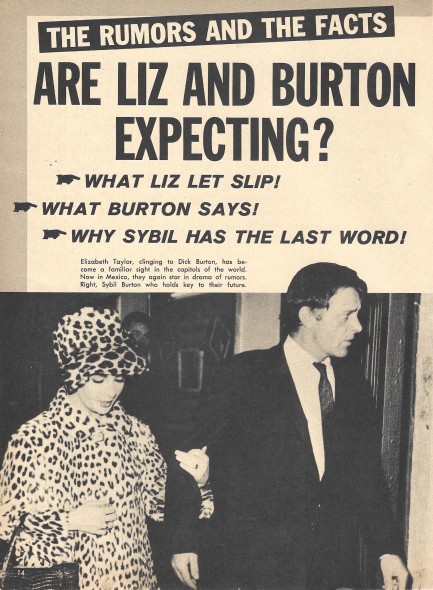 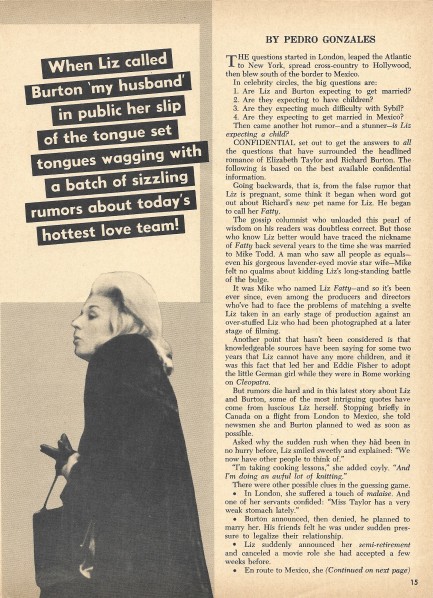 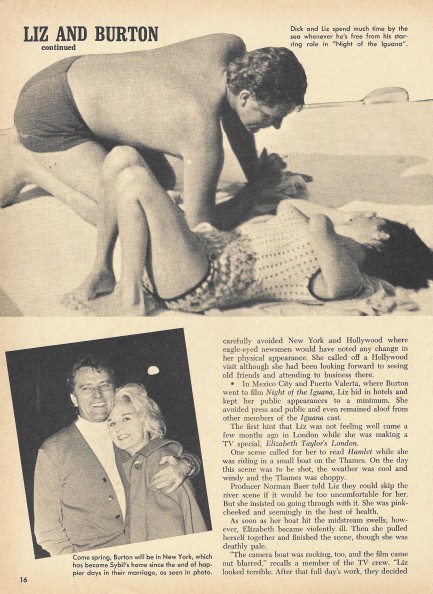 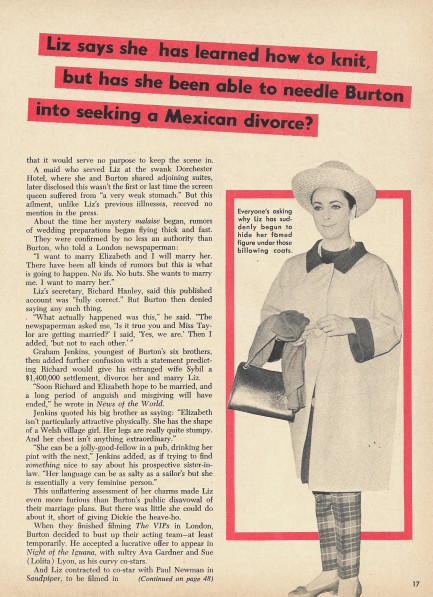 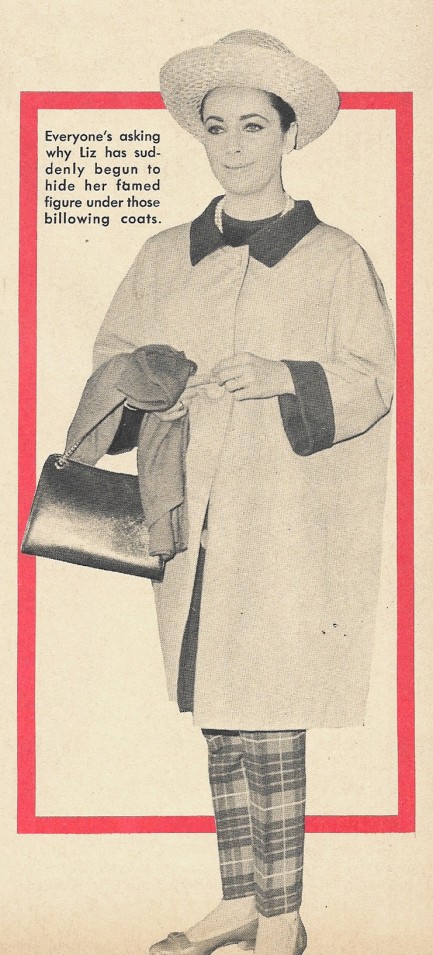  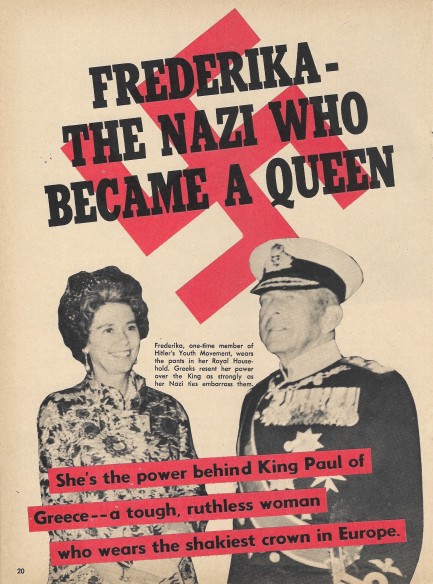 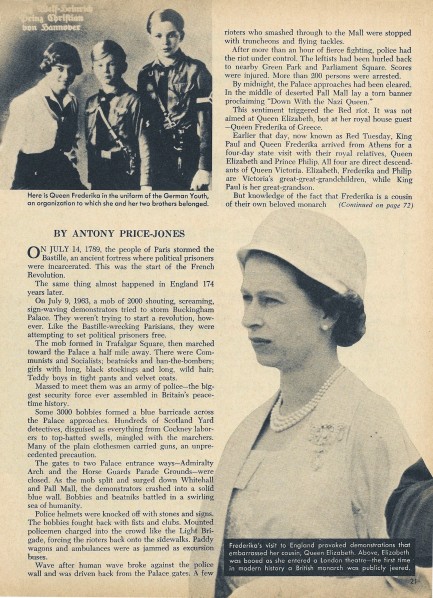 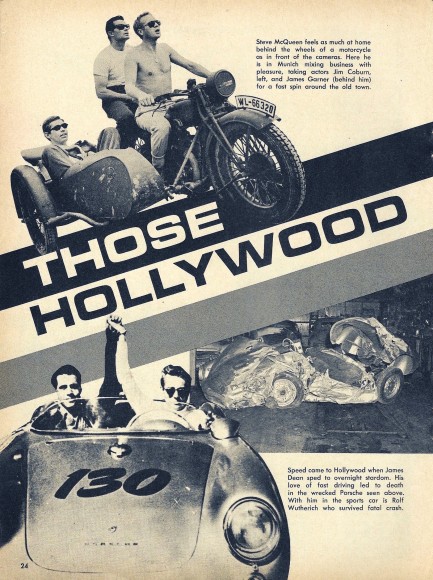 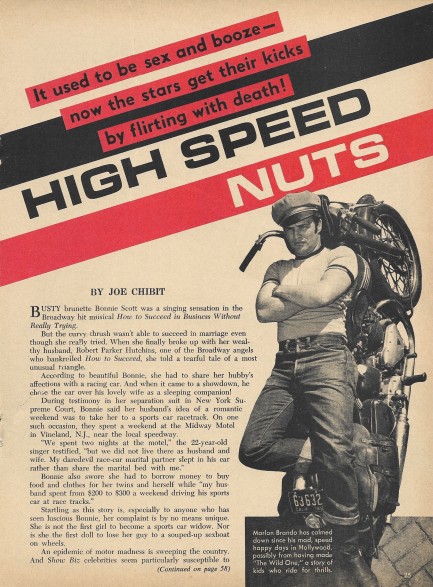 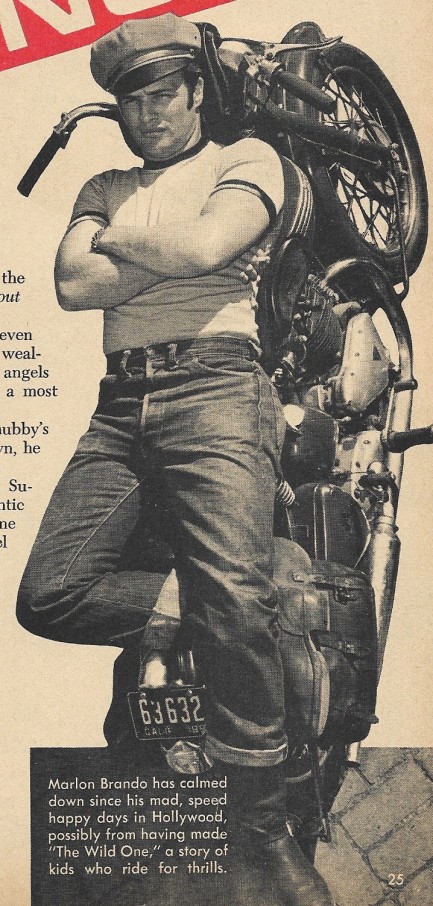 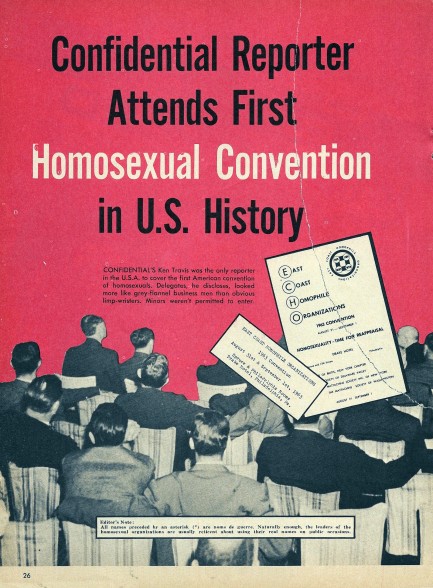 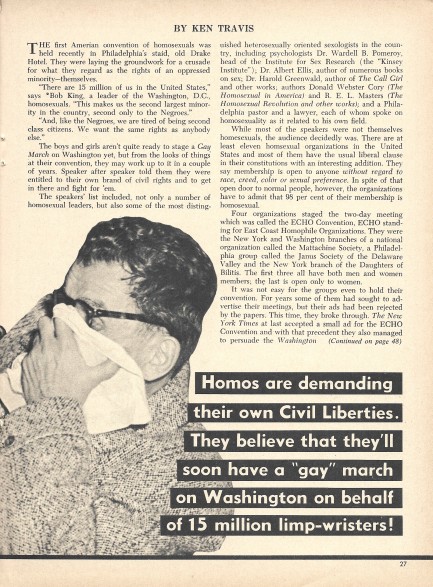 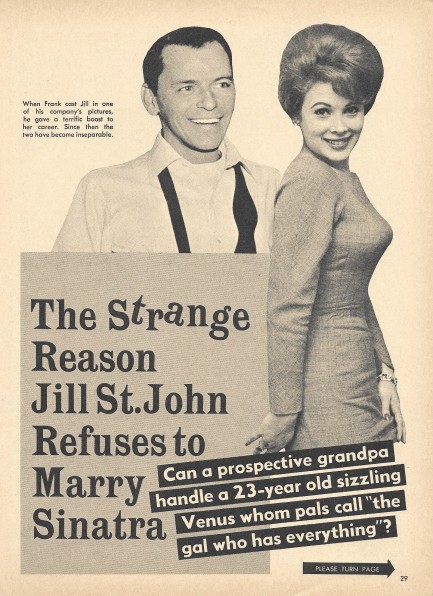 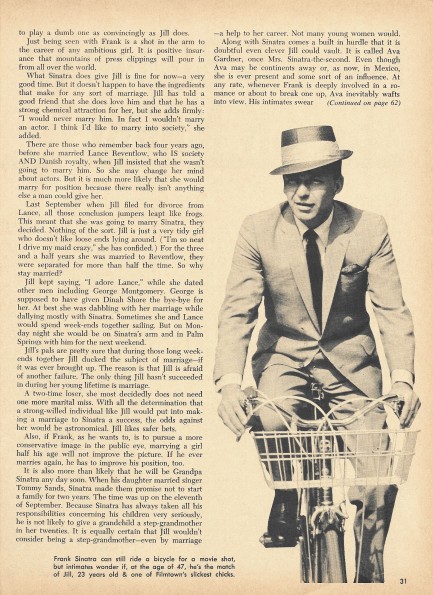 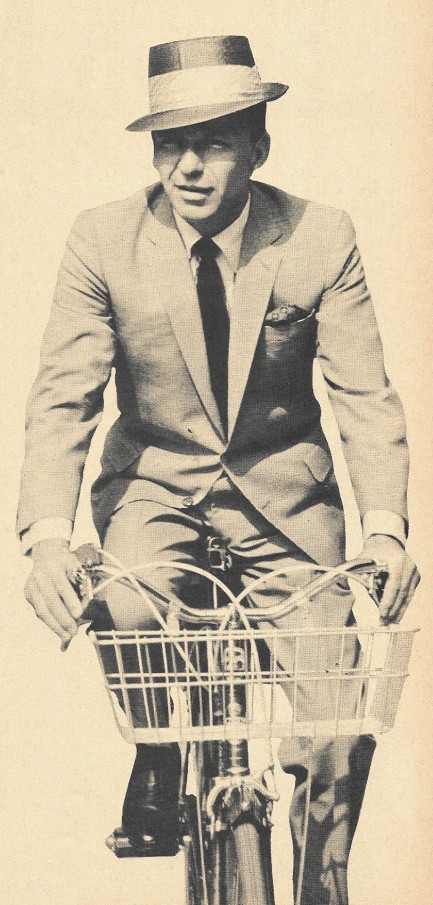 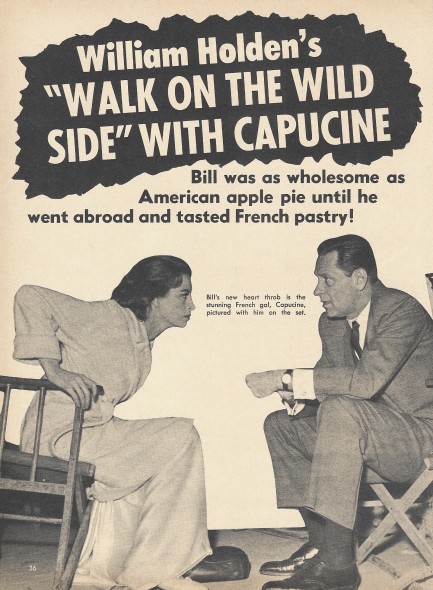 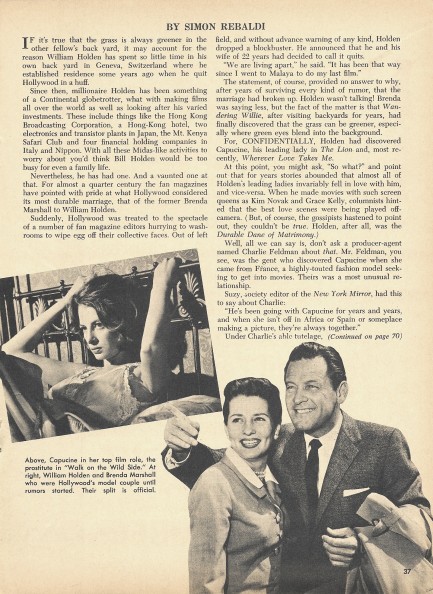 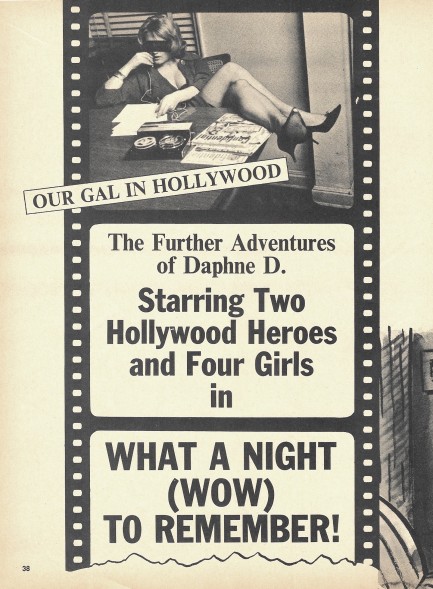 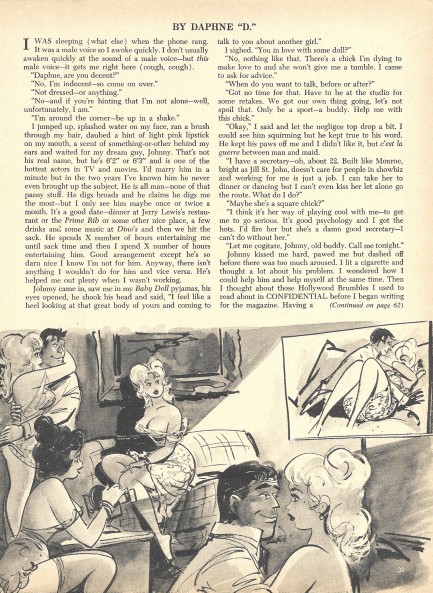 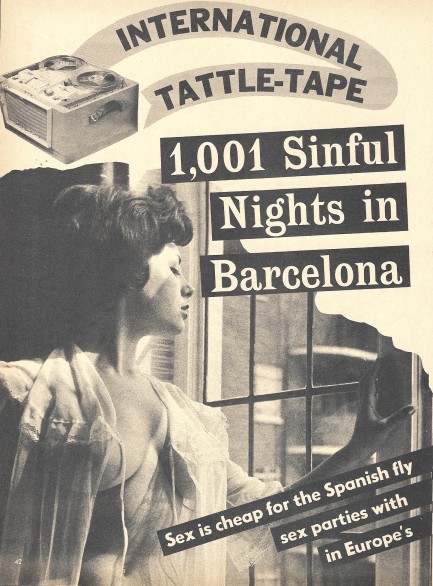 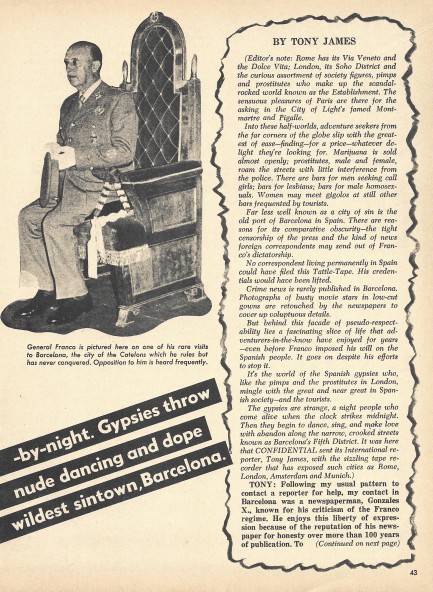 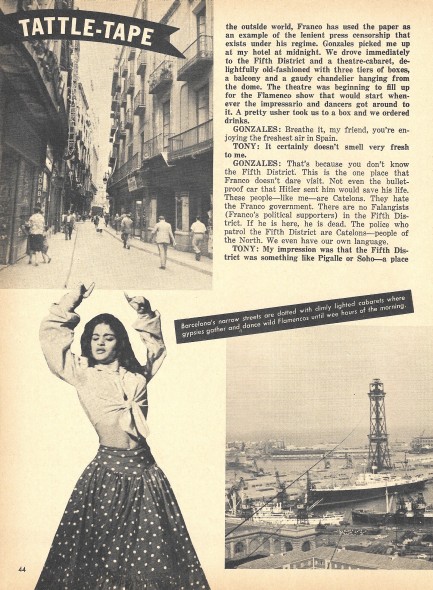
 Her story is more dream than nightmare, but that's why it's fiction. 
The World of Suzie Wong was the definition of a polarizing film, generally liked by audiences, but often reviled by social observers. For the former group it was just entertainment, a risqué Cinderella fantasy. For the latter group, it was an exercise in cinematic irresponsibility. Few filmmakers have been interested in exploring the human trafficking, physical and psychological abuse, drugs, and destroyed futures that predominate prostitution, but that's no surprise—filmmaking is about moneymaking, and who'd normally go see a movie that was such a downer? While it's true that 2015's Tangerine was acclaimed, it was also shot on three iPhones. Its director has moved on to bigger budgets because he wants to make money too. So let's first of all accept Suzie Wong for what it is: a mainstream film exploring the idea of a rare type of prostitute—the one clearly destined for a better life.
The idea isn't actually so outlandish. Our personal experience has taught us that there are all kinds of hookers. In Brazil, some do it for two weeks bracketing Carnival and make more money than they do working their regular jobs the rest of the year. They don't consider themselves to be prostitutes. They consider themselves to be modern-minded and smart. When PSGP worked at Playboy he was aware of models (anecdotally) and porn actresses (definitely) who did it when they had money troubles. There are plenty of men who'll pay to sleep with his favorite centerfold or porn star, and the money she earns is all hers—none goes to an agent or grifter boyfriend. Models were occasionally invited to certain Middle Eastern oil states and were paid many thousands of dollars per week just to attend swank social occasions and be friendly. The friendliest—interpret that how you wish—would be welcome to stay for months and earn gifts, while the less friendly ones quickly would be shipped out. The point is there are all types.
So while people who hate Suzie Wong are correct that a depiction of prostitution that doesn't explore the typical reality reinforces a false narrative about what is a dirty and dangerous job, the movie is simply a piece of entertainment—and has the right to be. It's no more about real prostitution than Raiders of the Lost Ark is about real archaeology. You'll have to gloss over its imperialist ethnic snobbery too. But if you choose to cross the disbelief suspension bridge, it's a pretty entertaining flick, a drama about an American artist in Hong Kong played by William Holden who meets a local prostitute played by Nancy Kwan, asks her to model for him, and over the course of their increasingly fruitful artistic collaboration finds himself drawn to her. Kwan makes no secret of the fact that she immediately has feelings for Holden, but he resists—not forever, obviously. At that point the difficult question of whether they can actually make a life together—or should even try—is what the plot explores.
Suzie Wong's gimmick of a hooker's love completing a man who's lonely or adrift has been used in films such as Irma la Douce, Night Shift, and Pretty Woman, and audiences responded favorably because, at their core, all those films are romances. But there's more to Suzie Wong than just its sooty Cinderella aspects. At a time of still-rigid ideas about female purity, it asked male viewers to consider the possibility that the number of men a woman sleeps with is immaterial. So in that sense it's a forward thinking film—something usually forgotten by its critics. The source novel by Richard Mason is probably more nuanced, but we haven't read it. We do know, however, that he wrote it after staying at the Luk Kwok Hotel in Hong Kong, which was a brothel. So maybe he learned a little something that gave his book—and the film—a bit more verité than people generally suspect. When you include its great exteriors and sets, and Kwan herself in a starmaking role, the result is exotic, emotional, and at times uplifting. The World of Suzie Wong premiered in the U.S. today in 1960. See more promo images here and here.
 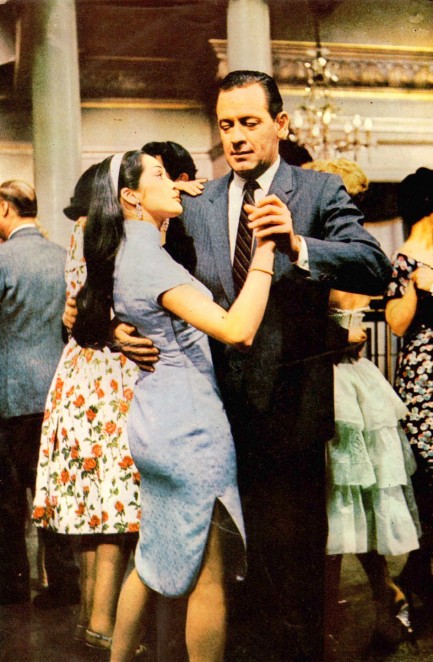 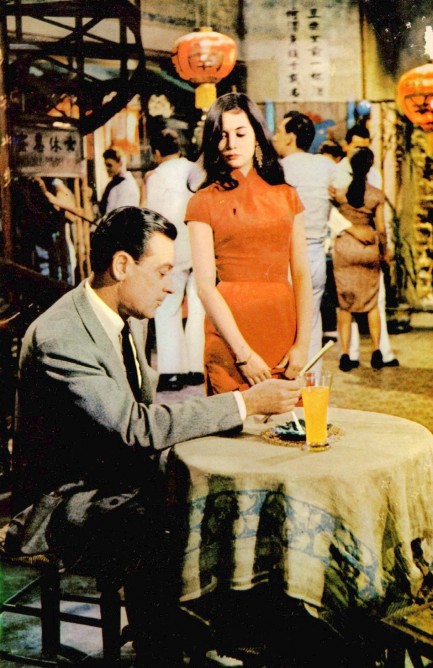 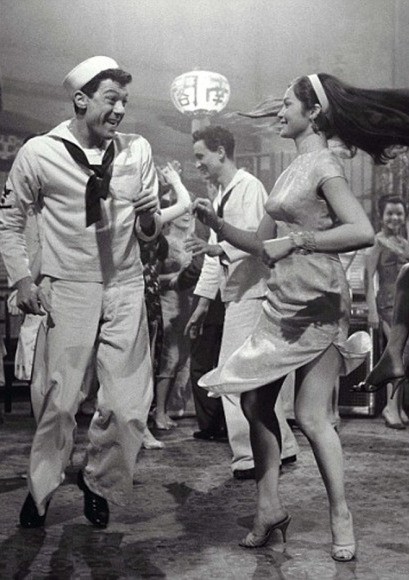 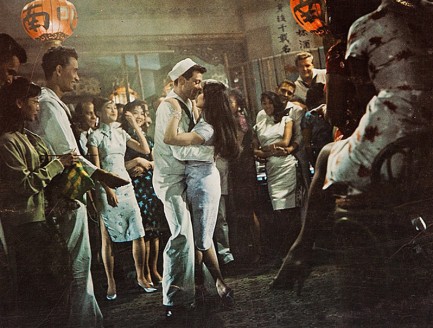 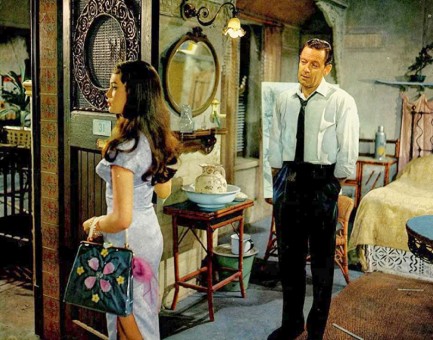 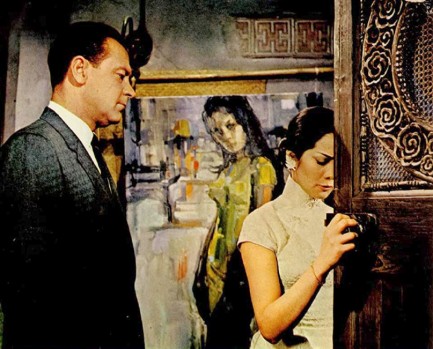 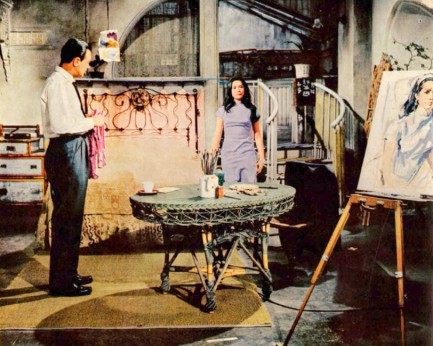 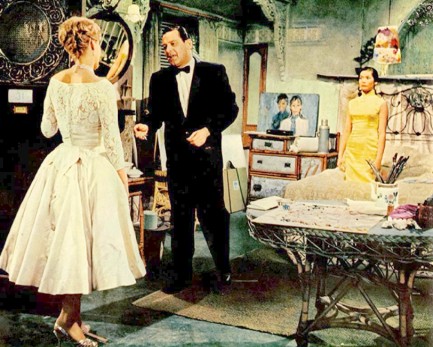  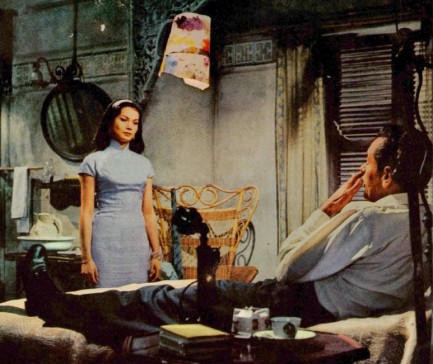 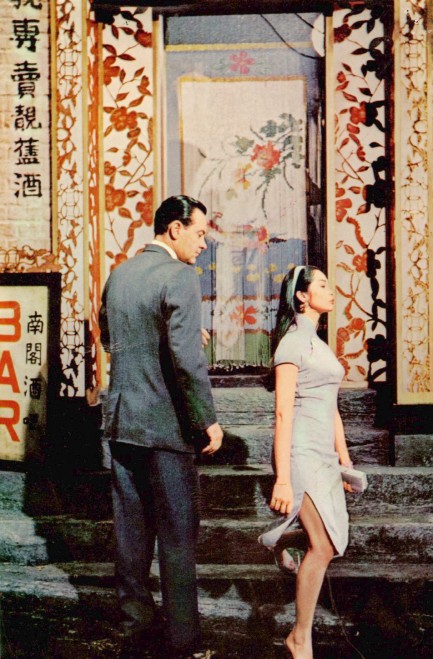 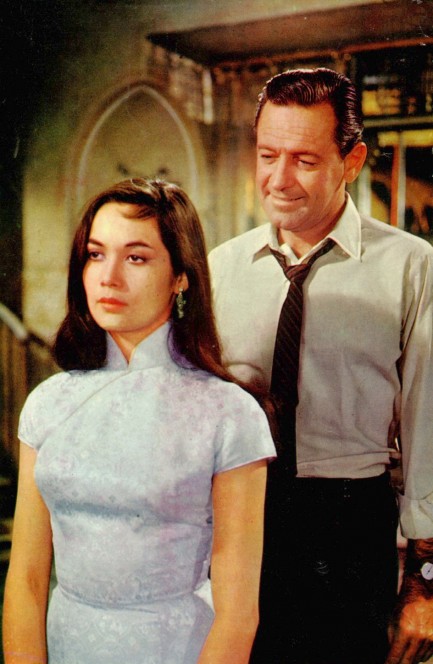 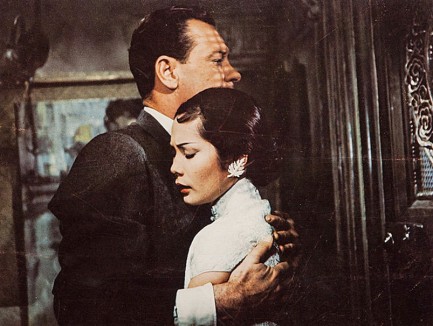 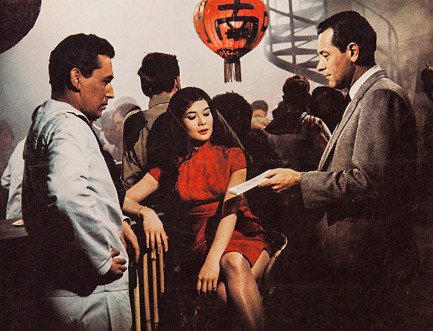 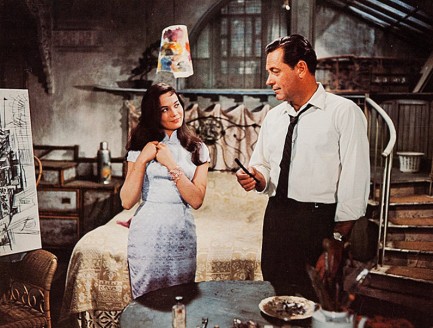 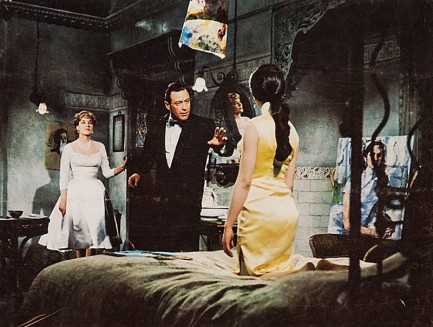 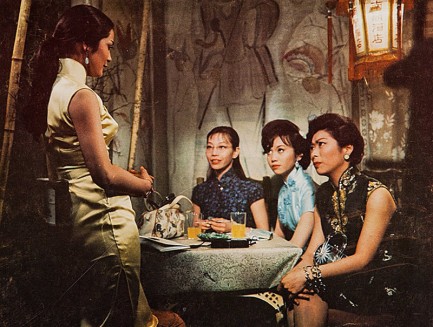 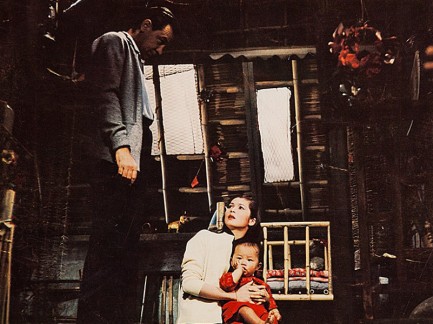 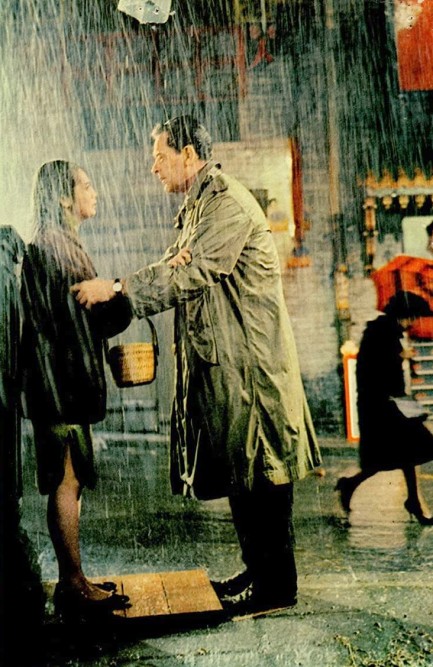 
 Vintage men's magazine stands at the threshold to a new era. 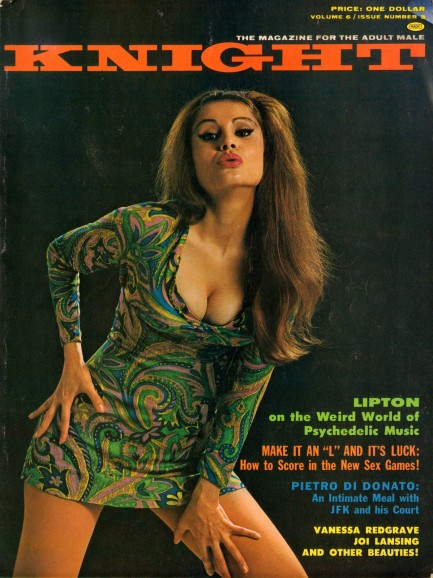
In many countries during the late 1960s the newsstands were still dominated by nudie mags that bore classical, studio nude-style depictions of women, but the transition toward magazines recognizable as modern porn was well underway. Knight, from Sirkay Publishing out of Los Angeles, is one of those transitional magazines. It debuted as Sir Knight in 1958 with a focus on fiction, humor, and demure photo features. The above issue published in 1967 is a bit racier, but still middle-of-the road for the time period. In another few years pubic hair would be on display in American men's magazines. Soon after that the pearly gates would appear, and in short order they'd be wide open. Did we really write that? Sorry—it's the booze talking.
On the cover here is Rita Rogers, touted as the next big thing, but who made only a few magazine appearances as far as we can tell. Inside you get William Holden, Turkish bellydancer Kiash Nanah, aka Aïché Nana, whose impromptu strip in a Rome cafe we talked about a while back, and actress Joi Lansing, whose age resistant DNA we talked about here. And you get some fantastic art, much of it with a psychedelic edge. There's also an article on psychedelic music, so that seems to have been a theme with this issue. We love these old nudie publications. They're so innocent by today's bizarro standards that if you caught your kid looking at one you'd probably hug him and go, “You've made me very, very happy!” Scans below.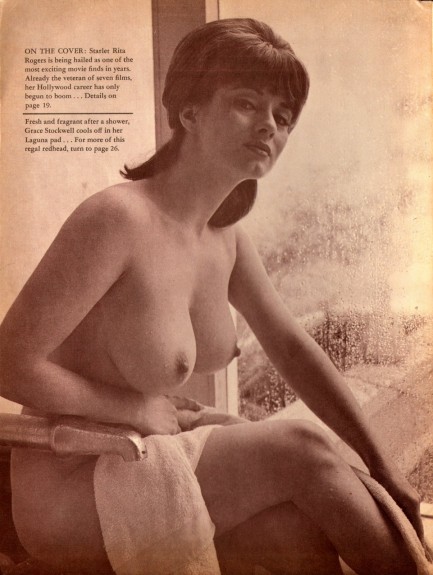  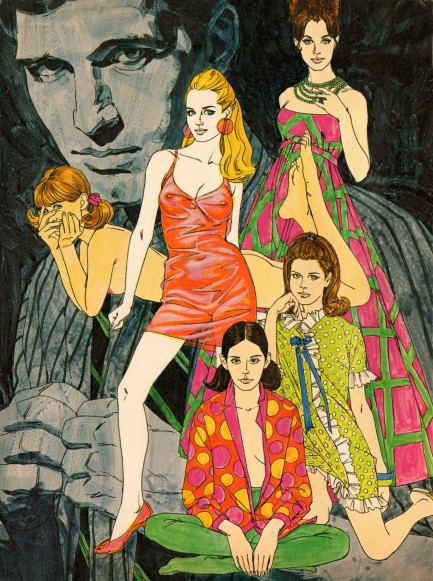 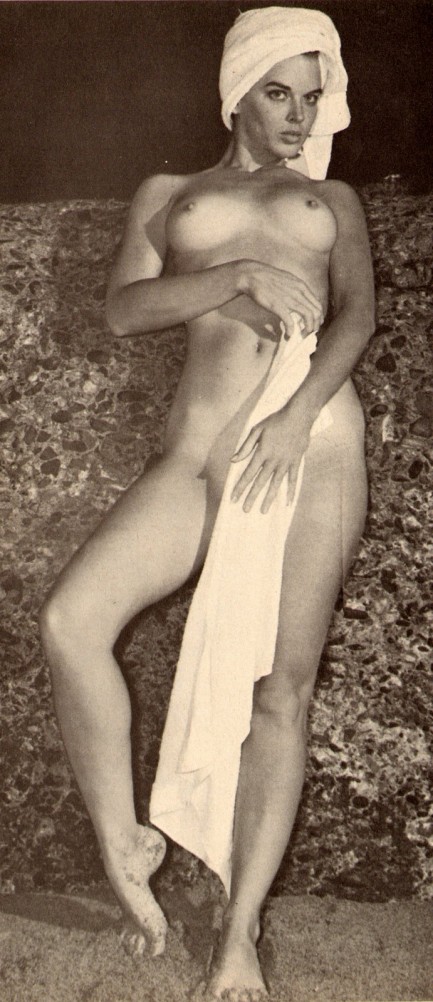 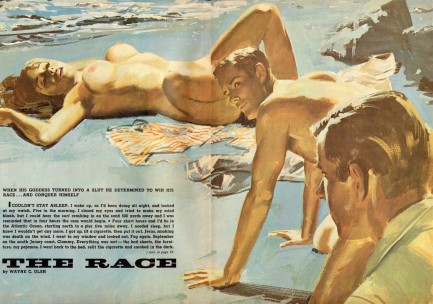 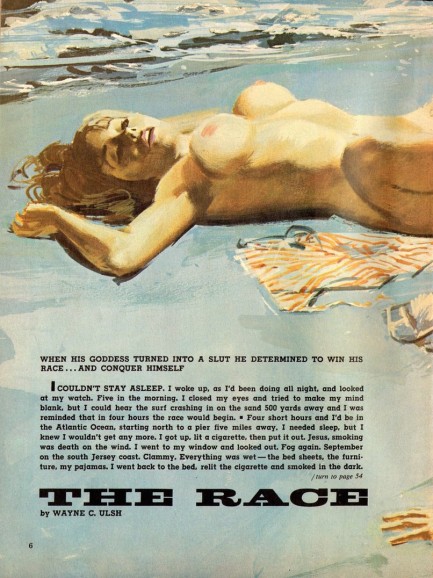 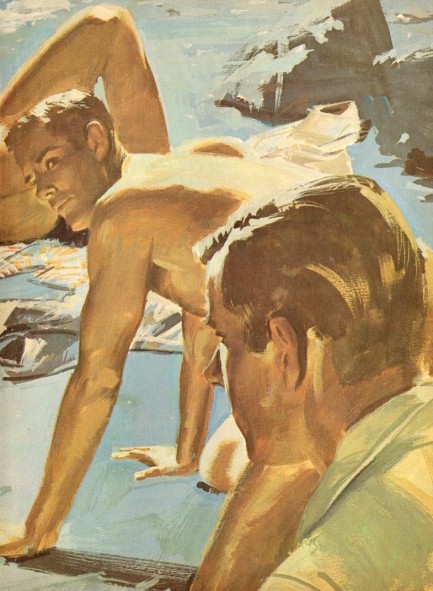  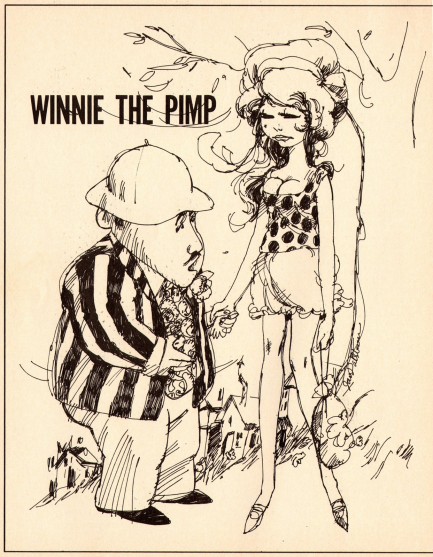 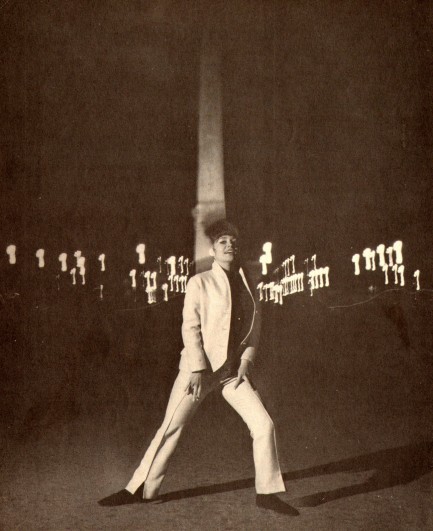    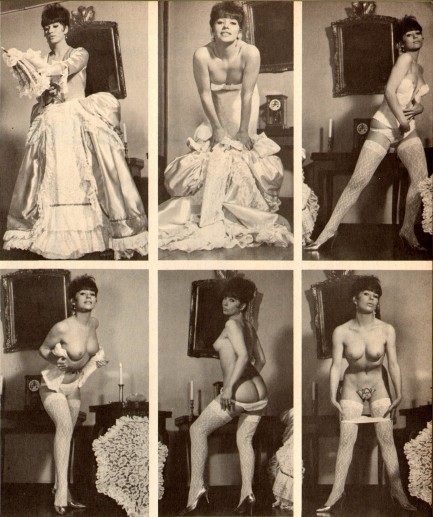 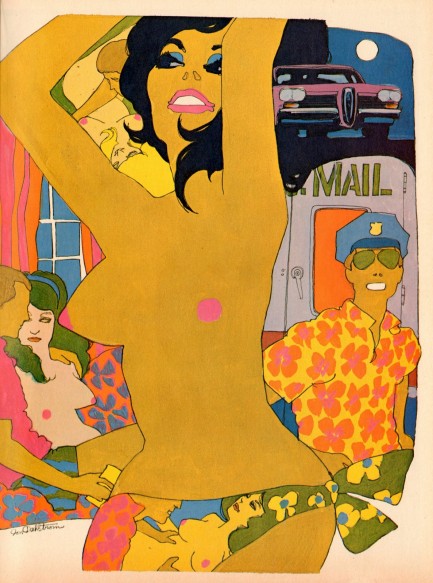      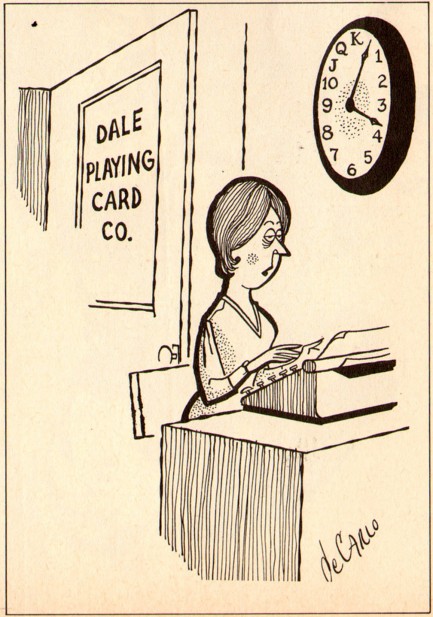   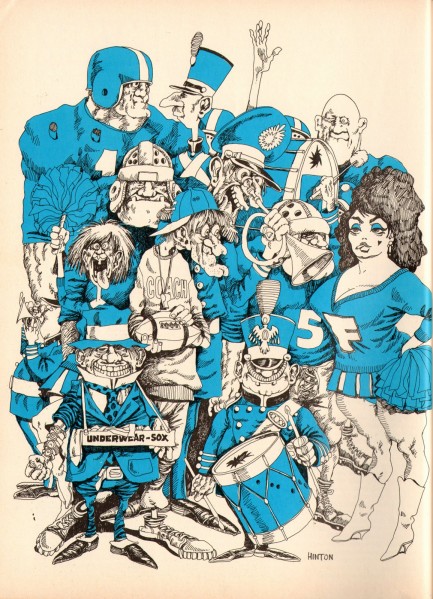  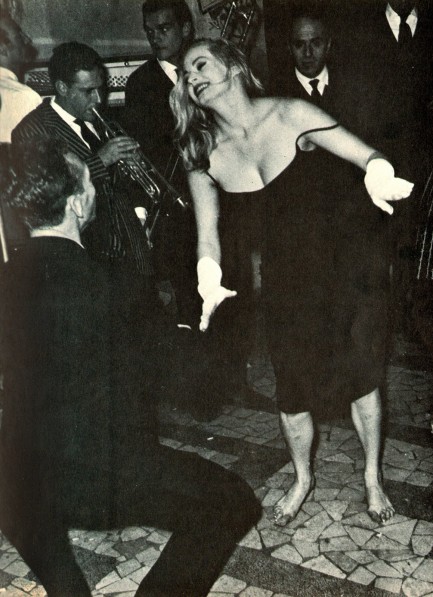 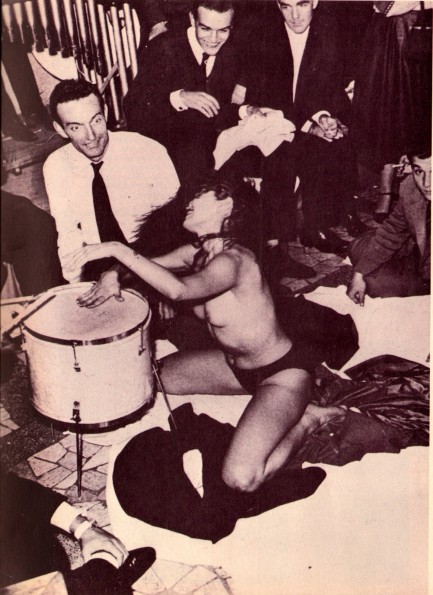 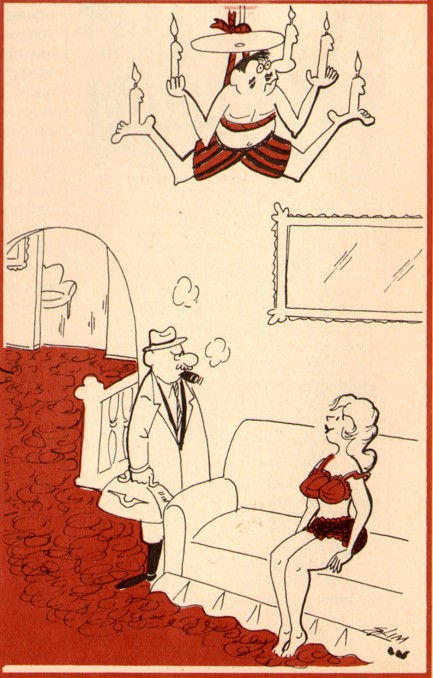 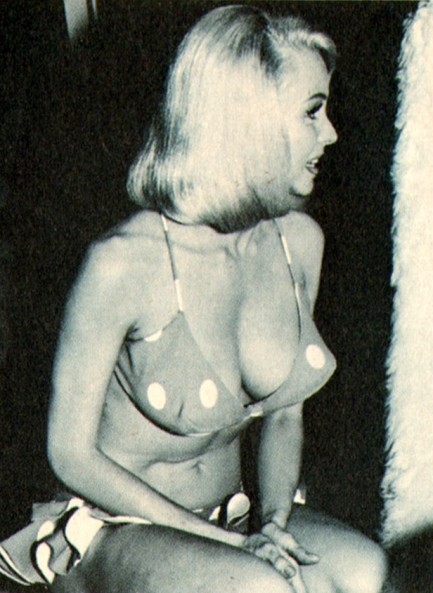 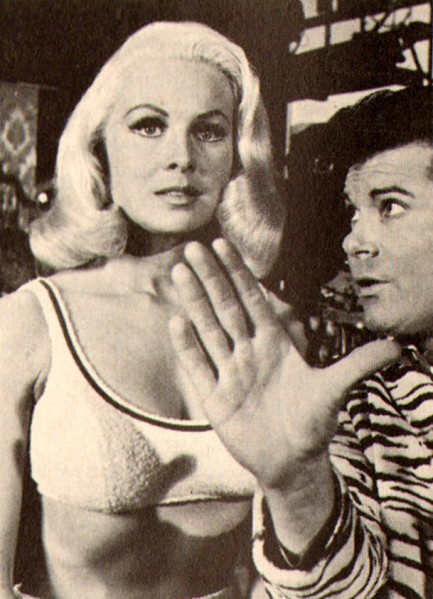 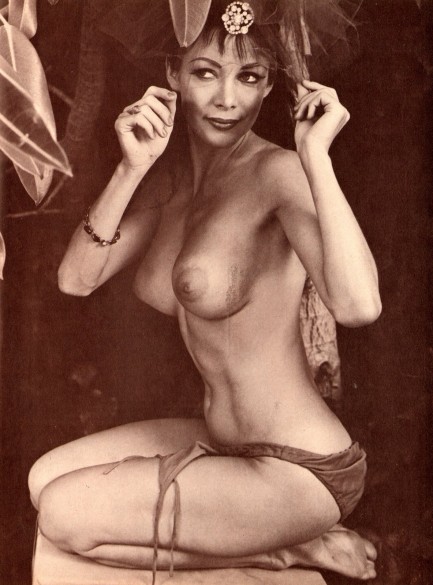 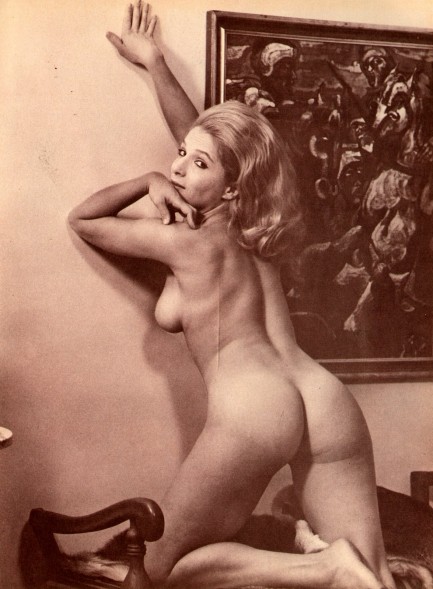 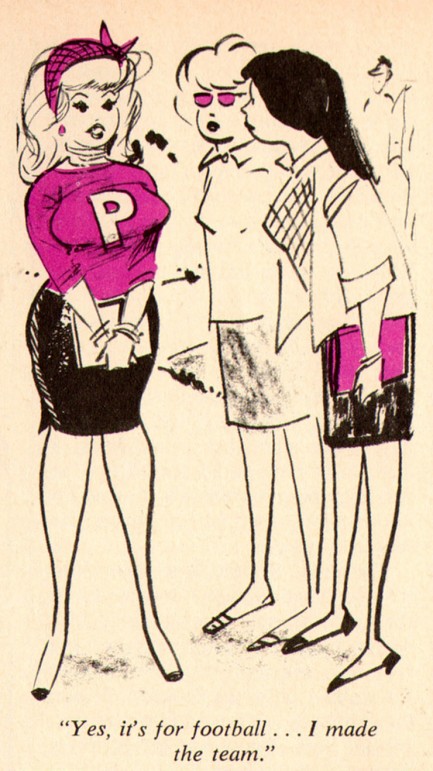 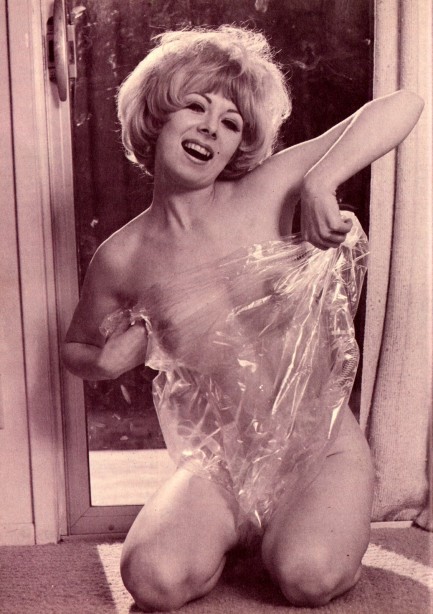 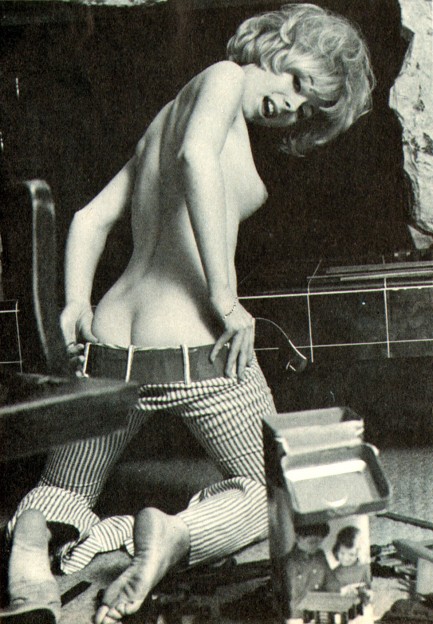  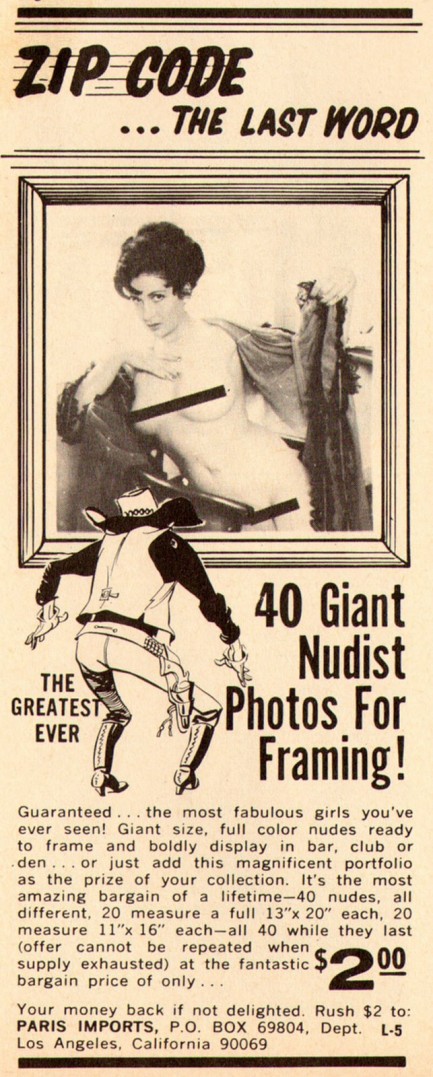 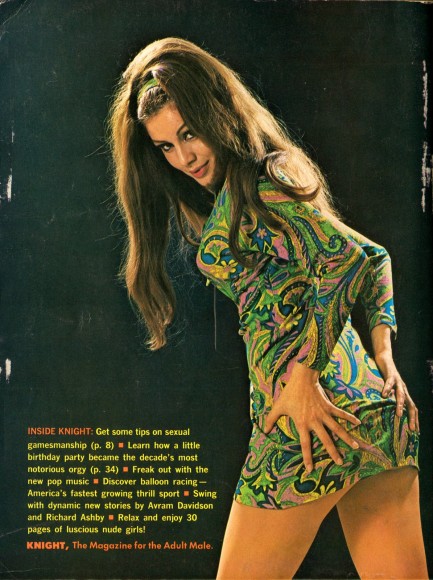
 The tabloid media was like a pack of animals and Mansfield was the meal. 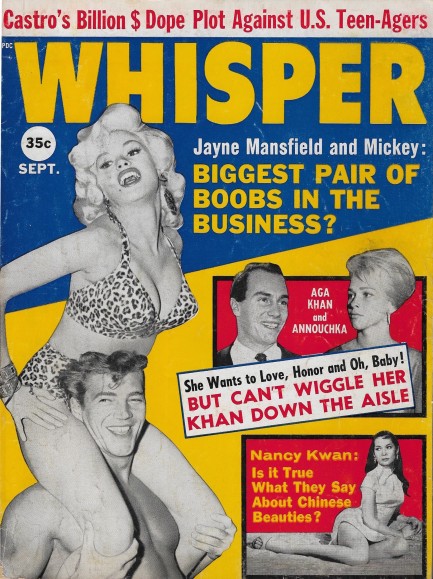
We never realized this before, but the editors of Whisper really had it in for Jayne Mansfield. We mean more than usual for a vicious tabloid. Most of the issues we have contain highly negative stories about her, such as this one published in 1962 that calls her and husband Mickey Hargitay “the biggest pair of boobs in the business.” Geez, what did she do to them? Piss in their grits? Dropkick their Corgis? Obviously, the biggest boobs thing is a play on words referencing Mansfield's bust, but they're referencing her personality when they talk about her “false façade” and “up-front ways.” Regardless of whether Whisper approved of Mansfield, it couldn't stop featuring her—a fact the magazine acknowledged. We'll see her in these pages again.
Meanwhile, elsewhere in Whisper, the amazing Señor Fidel Castro makes one of his regular appearances. Like Mansfield, the magazine couldn't stop writing about him. According to the editors, the Beard had launched a plot to addict American youth to drugs. We call Castro amazing because according to various mid-century tabloids he was simultaneously training Viet Cong soldiers in Cuba, funneling arms to U.S. inner cities, assassinating JFK, planning to overthrow the Catholic Church, raping teenaged girls, and helping East Germany revive the Third Reich. Talk about great time management skills. If only we were half as organized.
Did drugs flow from Cuba to the U.S.? It's an accusation that has come up numerous times over the years. Considering that since at least 1950 drugs were flowing into the U.S. from Colombia, Mexico, Peru, Brazil, Afghanistan, Thailand, et al—it would be astonishing if drugs didn't also originate from or transit through Cuba. With what degree of official approval we'll probably never know. Heads of state are notoriously insulated. In fact, the only one we can think of offhand who was definitively tied to drug dealing was Panama's former strongman Manuel Noriega, who was doing it with the full knowledge of the CIA, but we can probably safely assume he wasn't the first national leader to peddle drugs.
Whisper isn't aiming for investigative journalism in its Castro piece. That would require actual work. Its story is 90% lollipop, 10% stick. But the ratio of fiction to fact is meaningless as long as the writing fits the brief: focus obsessively on the sensational, the frightening, and the infuriating. That's why we call mid-century tabloids the cable news channels of yesteryear. Though people were doubtless highly agitated about what they read in these quasi-journalistic outlets, the passage of decades makes them harmless fun for us to explore. Maybe one day a future website—or whatever passes for one ages from now—will be able to make jokes about the things agitating us. Let's hope so. We have a bunch of scans below, and more tabloids than we can count inside the website. Look here.
 Suzie Wong gets with the program. 
When we watched The World of Suzie Wong several years ago we were aware that it had been a pretty big hit. It's no surprise, then, that we keep running across memorabilia from the film. Here we have a promotional pamphlet from Hong Kong, with a very cool cover of the prostitute title character, who was played by Nancy Kwan. Yes, it's faded as hell, but we kind of like that. These Hong Kong items are often in terrible shape, but there's such a thing as beautiful squalor. Is it the humidity that did this? Check out this other Suzie Wong item we shared way back, made with better paper, and seemingly stored with better care. We have scans of a few deteriorated but still interesting interior pages below, and if you read Chinese, all the better.
We may talk about The World of Suzie Wong a bit later. We watched it without the Pulp Intl. girlfriends, and we imagine they would have hated it—as any contemporary woman would, when it comes to romanticizing prostitution. Additionally, since PI-2 is Filipina, we suspect she'd have a particularly incisive perspective. Yes, the Philippines are a long way from Hong Kong, but considering how encompassing attitudes were in mid-century Hollywood toward Asian women, we think she's well qualified to comment on a set-in-Hong Kong movie. In any case, it's a discussion for another day, perhaps. Scans below. 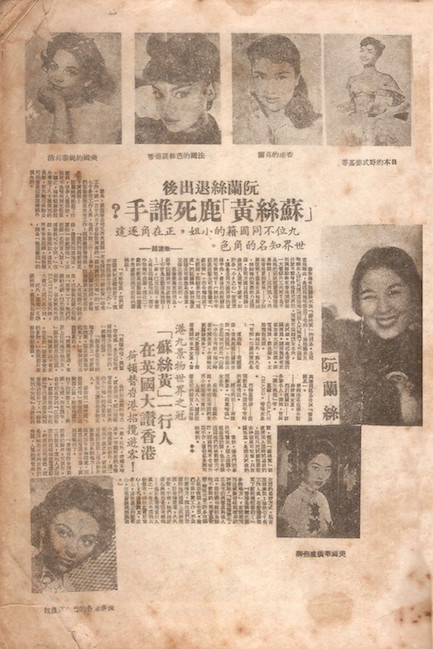 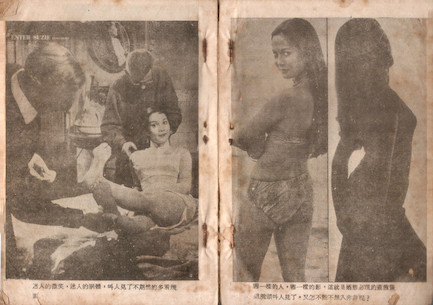 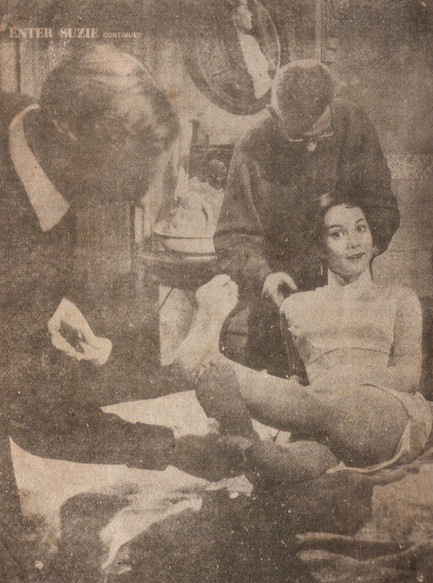 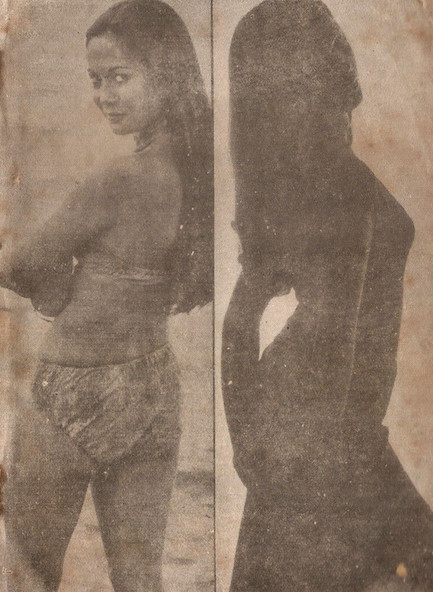 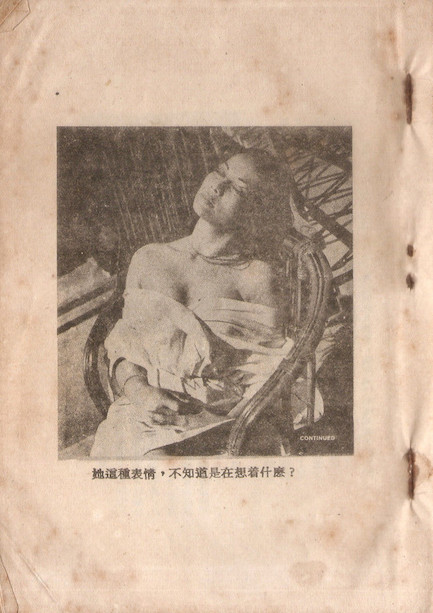 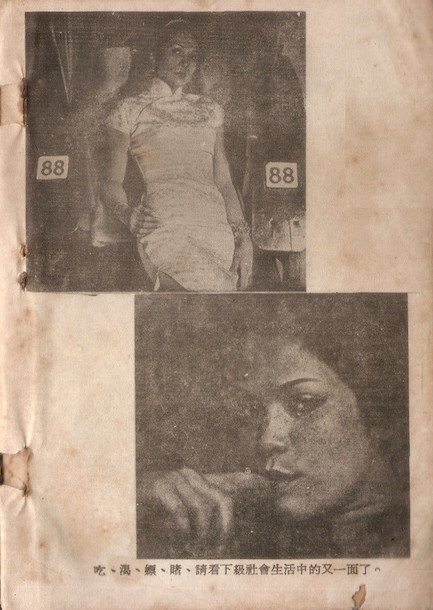 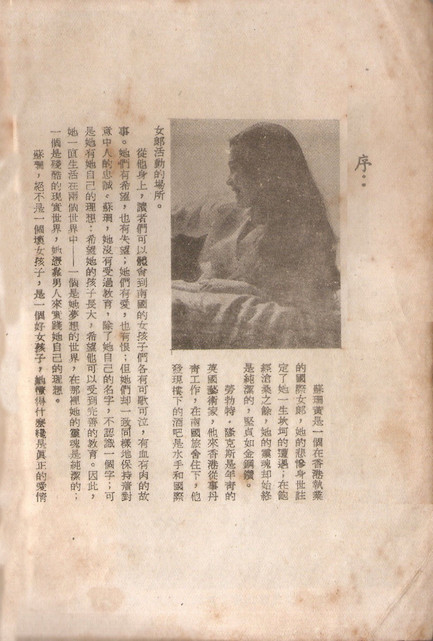 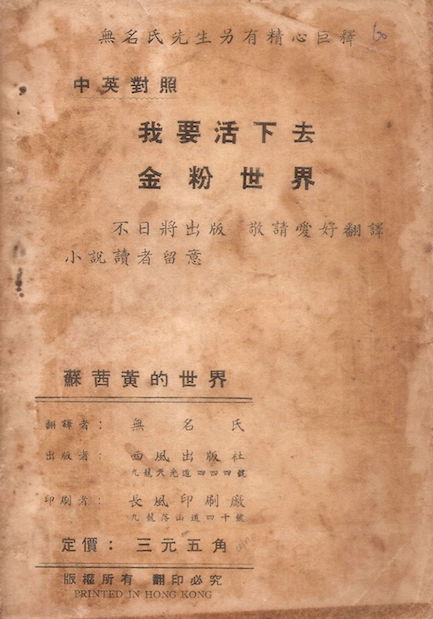

|
 |

The headlines that mattered yesteryear.
2003—Hope Dies
Film legend Bob Hope dies of pneumonia two months after celebrating his 100th birthday. 1945—Churchill Given the Sack
In spite of admiring Winston Churchill as a great wartime leader, Britons elect
Clement Attlee the nation's new prime minister in a sweeping victory for the Labour Party over the Conservatives. 1952—Evita Peron Dies
Eva Duarte de Peron, aka Evita, wife of the president of the Argentine Republic, dies from cancer at age 33. Evita had brought the working classes into a position of political power never witnessed before, but was hated by the nation's powerful military class. She is lain to rest in Milan, Italy in a secret grave under a nun's name, but is eventually returned to Argentina for reburial beside her husband in 1974. 1943—Mussolini Calls It Quits
Italian dictator Benito Mussolini steps down as head of the armed forces and the government. It soon becomes clear that Il Duce did not relinquish power voluntarily, but was forced to resign after former Fascist colleagues turned against him. He is later installed by Germany as leader of the Italian Social Republic in the north of the country, but is killed by partisans in 1945.
|

|
|

It's easy. We have an uploader that makes it a snap. Use it to submit your art, text, header, and subhead. Your post can be funny, serious, or anything in between, as long as it's vintage pulp. You'll get a byline and experience the fleeting pride of free authorship. We'll edit your post for typos, but the rest is up to you. Click here to give us your best shot.

|
|


































 Diana Dors smacks Patrick Allen blurry in 1957's The Long Haul.
Diana Dors smacks Patrick Allen blurry in 1957's The Long Haul. Mob boss George Raft menaces Anne Francis in a promo image made for 1954's Rogue Cop.
Mob boss George Raft menaces Anne Francis in a promo image made for 1954's Rogue Cop. Bud Abbott gets aggressive with Lou Costello in 1945's Here Come the Co-Eds.
Bud Abbott gets aggressive with Lou Costello in 1945's Here Come the Co-Eds. Jo Morrow takes one from black hat Jack Hogan in 1959's The Legend of Tom Dooley.
Jo Morrow takes one from black hat Jack Hogan in 1959's The Legend of Tom Dooley. Chris Robinson and Anita Sands get a couple of things straight about who's on the yearbook committee in Diary of High School Bride.
Chris Robinson and Anita Sands get a couple of things straight about who's on the yearbook committee in Diary of High School Bride. Paul Newman and Ann Blyth agree to disagree in 1957's The Helen Morgan Story.
Paul Newman and Ann Blyth agree to disagree in 1957's The Helen Morgan Story. Verna Lisi shows Umberto Orsini who gives the orders in the 1967 film La ragazza e il generale, aka The Girl and the General.
Verna Lisi shows Umberto Orsini who gives the orders in the 1967 film La ragazza e il generale, aka The Girl and the General. What the fuck did you just call me? Marki Bey slaps Betty Anne Rees loopy in the 1974 horror flick Sugar Hill.
What the fuck did you just call me? Marki Bey slaps Betty Anne Rees loopy in the 1974 horror flick Sugar Hill. Claudia Cardinale slaps (or maybe punches—we can't remember) Brigitte Bardot in the 1971 western Les pétroleuses, known in English for some reason as The Legend of Frenchie King.
Claudia Cardinale slaps (or maybe punches—we can't remember) Brigitte Bardot in the 1971 western Les pétroleuses, known in English for some reason as The Legend of Frenchie King. Audrey Totter reels under the attentions of Richard Basehart in 1949 Tension. We're thinking it was probably even more tense after this moment.
Audrey Totter reels under the attentions of Richard Basehart in 1949 Tension. We're thinking it was probably even more tense after this moment. Anne Baxter tries to no avail to avoid a slap from heel Steve Cochran in 1954's Carnival Story.
Anne Baxter tries to no avail to avoid a slap from heel Steve Cochran in 1954's Carnival Story.
 Though Alan Ladd was a little guy who Gail Russell probably could have roughed up if she wanted, the script called for him to slap her, and he obeyed in the 1946 adventure Calcutta.
Though Alan Ladd was a little guy who Gail Russell probably could have roughed up if she wanted, the script called for him to slap her, and he obeyed in the 1946 adventure Calcutta. Peter Alexander guards his right cheek, therefore Hannelore Auer crosses him up and attacks his left in 1964's Schwejk's Flegeljahre, aka Schweik's Years of Indiscretion.
Peter Alexander guards his right cheek, therefore Hannelore Auer crosses him up and attacks his left in 1964's Schwejk's Flegeljahre, aka Schweik's Years of Indiscretion. Elizabeth Ashley gives Roddy McDowall a facial in in 1965's The Third Day.
Elizabeth Ashley gives Roddy McDowall a facial in in 1965's The Third Day. Tony Anthony slaps Lucretia Love in 1972's Piazza pulita, aka Pete, Pearl and the Pole.
Tony Anthony slaps Lucretia Love in 1972's Piazza pulita, aka Pete, Pearl and the Pole. André Oumansky goes backhand on Lola Albright in 1964's Joy House.
André Oumansky goes backhand on Lola Albright in 1964's Joy House. Frank Ferguson catches one from Barbara Bel Geddes in the 1949 drama Caught.
Frank Ferguson catches one from Barbara Bel Geddes in the 1949 drama Caught. This looks like a real slap, so you have to credit the actresses for their commitment. It's from 1961's Raisin in the Sun and shows Claudia McNeil rearranging the face of Diana Sands.
This looks like a real slap, so you have to credit the actresses for their commitment. It's from 1961's Raisin in the Sun and shows Claudia McNeil rearranging the face of Diana Sands. Gloria Grahame finds herself cornered by Broderick Crawford in 1954's Human Desire.
Gloria Grahame finds herself cornered by Broderick Crawford in 1954's Human Desire. Bette Davis, an experienced slapper and slappee, gets a little assistance from an unidentified third party as she goes Old West on Amanda Blake in a 1966 episode of Gunsmoke called “The Jailer.”
Bette Davis, an experienced slapper and slappee, gets a little assistance from an unidentified third party as she goes Old West on Amanda Blake in a 1966 episode of Gunsmoke called “The Jailer.” There are a few slaps in 1939's Gone with the Wind, so we had our pick. We went with Vivien Leigh and Leslie Howard.
There are a few slaps in 1939's Gone with the Wind, so we had our pick. We went with Vivien Leigh and Leslie Howard. Virginia Field takes one on the chin from Marshall Thompson in Dial 1119.
Virginia Field takes one on the chin from Marshall Thompson in Dial 1119. Clint Eastwood absorbs a right cross from nun Shirley MacLaine in 1970's Two Mules for Sister Sara.
Clint Eastwood absorbs a right cross from nun Shirley MacLaine in 1970's Two Mules for Sister Sara.





















































































































































